

How Do Sailboats Get Fresh Water? (4 EFFECTIVE SOLUTIONS)

Sailors know that having access to fresh water is essential for a safe and comfortable journey out at sea. But how do they get this water? Fortunately, there are several ways for sailors to get fresh water while out at sea. In this article, well explore four effective solutions: watermakers, collecting rainwater, using jerry cans, and using a water filter. Well also discuss the benefits of having fresh water at sea and the safety precautions to take. So, if youre planning a sailing adventure, read on to find the best way to get fresh water for your trip!
Table of Contents
Short Answer
Most sailboats get their fresh water from onboard tanks that they fill up from dockside water sources.
They can also use desalination systems to take salt out of seawater and make it drinkable.
Boats that are moored in marinas may be able to get fresh water from the marina itself.
Some sailboats also have large water containers that they fill up from a hose or a freshwater source on shore.
What is a Watermaker
A watermaker is a device that is used to convert saltwater into freshwater, making it an essential tool for sailors who are out at sea for extended periods of time.
The device works by taking in saltwater, filtering it, and then using a process called reverse osmosis to extract the salt from the water.
The device then produces freshwater that is safe to drink and use for cooking.
This process helps ensure that sailors have access to freshwater even when they are far away from land.
Some watermakers are powered by a boats engine, while others are powered by an auxiliary electric motor.
In addition, many modern watermakers are equipped with advanced features such as automated operation, corrosion-resistant materials, and low-maintenance designs.
Collecting Rainwater

One of the most effective solutions for sailboats to get fresh water is by collecting rainwater.
Sailors can use a variety of methods to collect rainwater and store it on board.
These include using a tarp to collect rainwater, using a rainwater catchment system to collect and store large amounts of water, or using a container to collect smaller amounts.
Collecting rainwater is a great way to get fresh water without having to rely on a watermaker or other more expensive methods.
When collecting rainwater, it is important to make sure that the water is clean and free of contaminants.
Sailors can ensure this by covering the tarp or catchment area with a material such as a boat cover to keep out dirt and debris, or by using a filter to eliminate any larger particles from the collected water.
With the right setup, sailors can use rainwater to supply their fresh water needs while on board.
In addition to providing an easy and cost-effective way to get fresh water, collecting rainwater is also a great way to save on fuel costs.
Collecting rainwater requires no fuel, and can help sailors to conserve their fuel resources while at sea.
All in all, collecting rainwater is an efficient, cost-effective, and environmentally friendly way for sailboats to get fresh water.
With the right setup, sailors can easily collect and store large amounts of fresh water while on board.
Using Jerry Cans
Using jerry cans to transport water from land is a popular method for sailboats to get fresh water.
Jerry cans are large, airtight containers that are designed to withstand the harsh conditions of the sea.
They come in various sizes, and can hold up to 20 gallons of water.
This makes them ideal for sailboats, as they can be easily loaded onto the boat and transported to the open seas.
When using jerry cans, its important to ensure that the cans are properly sealed to prevent any saltwater from getting in.
Additionally, its important to check the cans regularly for signs of wear and tear.
If any cracks or holes are found, its best to replace the container as soon as possible to ensure safe and clean water.
Once the jerry cans are full of water, they can be easily loaded onto the sailboat.
This method of obtaining fresh water is great for sailors that are close to land and can easily access a source of freshwater.
Its also a great way to stock up on water for longer voyages, as the cans can be loaded up and stored on the boat until needed.
Overall, using jerry cans to transport water from land is a great way for sailboats to get fresh water.
Its a relatively simple process and can provide sailors with a reliable source of freshwater.
As long as the containers are properly sealed and checked regularly, they can provide sailors with all the fresh water they need for a successful voyage.
Using a Water Filter

Using a water filter is a great way for sailboats to get fresh water while they are out on the open sea.
A water filter is a device used to remove impurities from water, such as dirt, bacteria, and other contaminants.
Not only is this a cost-effective way to get fresh water, but it is also a safe and reliable option.
When using a water filter, you can either choose to attach the filter directly to the side of the boat, or you can use a portable filter.
The filter works by collecting water from a river, lake, or stream and filtering out any impurities.
The filtered water is then delivered to the boat and can be used for drinking, cooking, and other activities.
There are many different types of water filters available, depending on your needs.
Some filters are designed to remove bacteria and other contaminants, while others are designed to remove heavy metals and pesticides.
When choosing a filter, it is important to consider the type of water you will be filtering, the amount of water you will need, and the size of the filter.
One of the advantages of using a water filter is that you can filter water from any source, making it a great option for sailboats.
Additionally, water filters do not require a large amount of electricity, making them an ideal choice for sailboats.
Not only is it cost-effective, but it is also safe and reliable.
With a variety of filters available, you can be sure to find a filter that meets your needs.
Desalinators
When it comes to getting fresh water while sailing, desalinators are one of the most reliable and effective solutions.
A desalinator is a machine that converts seawater into fresh water.
It works by using a process called reverse osmosis, which filters out salt and other impurities from the seawater and produces freshwater as a result.
Desalinators can be powered by electricity, or they can be powered by the boats engine, making them flexible and convenient.
Desalinators are often used in boats that are sailing in areas with limited access to freshwater sources, such as the ocean.
They are also often used in emergency situations, as they can provide a reliable and safe supply of freshwater in the absence of other options.
Desalinators are also typically more efficient than other methods of obtaining freshwater.
They use a relatively small amount of energy to produce a large amount of freshwater, making them cost-effective and efficient.
Additionally, they require minimal maintenance, making them a great option for sailors who want a reliable source of freshwater while at sea.
The only downside to desalinators is that they can be expensive to purchase and install.
However, if you are a sailor who needs a reliable and consistent source of freshwater while sailing, a desalinator is likely your best bet.
Benefits of Fresh Water at Sea

Having access to fresh water while sailing at sea is essential for the safety and comfort of the crew aboard.
Not only does fresh water provide the essential hydration needed to sustain life, but it also helps to keep the boat and its occupants clean and healthy.
Fresh water can be used for cooking, washing dishes, showering, and laundry, and it can also be used to replenish drinking water supplies.
Having access to fresh water also helps to reduce the risk of dehydration and other health risks associated with drinking saltwater.
Finally, having access to fresh water can help to reduce the risk of running out of supplies while out at sea, as fresh water can be used to refill drinking water tanks and other vessels.
Safety Precautions
When it comes to getting fresh water for a sailboat, it is important to take safety precautions.
This is especially true when dealing with water from rivers, streams, or lakes, as these sources may contain harmful bacteria or other contaminants.
It is also important to practice safe water storage and transportation techniques when collecting water from jerry cans.
Boats should also be equipped with the necessary safety equipment, such as life rafts and life jackets, in case of emergencies.
Additionally, boat owners should make sure that their boat is properly equipped with all necessary navigation and communication equipment, as well as the necessary safety gear.
Finally, all crew members should be trained in how to properly handle and store the water they collect.
This will ensure that everyone is safe and that the water is handled with the utmost care.
Final Thoughts
Having access to fresh water while at sea is essential for a successful sailing journey.
All of the solutions discussed here have their own advantages and disadvantages, so it’s important to assess your situation and choose the best option for you.
Whether you choose to use a watermaker, collect rainwater, use jerry cans, use a water filter, or employ desalinators, you’ll be able to ensure that you have the fresh water you need to stay safe and comfortable while sailing.
James Frami
At the age of 15, he and four other friends from his neighborhood constructed their first boat. He has been sailing for almost 30 years and has a wealth of knowledge that he wants to share with others.
Recent Posts
When Was Banana Boat Song Released? (HISTORICAL INSIGHTS)
The "Banana Boat Song" was released in 1956 by Harry Belafonte. This calypso-style song, also known as "Day-O," became a huge hit and remains popular to this day for its catchy tune and upbeat...
How to Make Banana Boat Smoothie King? (DELICIOUS RECIPE REVEALED)
To make a Banana Boat Smoothie King smoothie at home, start by gathering the ingredients: a ripe banana, peanut butter, chocolate protein powder, almond milk, and ice. Blend the banana, a scoop of...

5 Best Watermakers for Sailboats

With the right Watermaker, the ocean becomes an almost immeasurable supply of fresh and clean drinking water to keep you hydrated during your offshore sailing adventures.
Many sailors do spend a lot of their time and money on various parts of the sailboat including the sails, engine, electronics, and generators especially when preparing for long-distance voyages.
While there's absolutely nothing wrong with this, they often overlook one crucial part of general human survival: having an ample supply of fresh drinking water.
Whether you have freshwater drinking tanks on your sailboat or planning to cruise in areas where you can easily access clean drinking water, the hassle involved in having to come to the dock to fill the water tanks can be quite overwhelming.
This is exactly why you need to find the best watermakers for sailboats.
Like many other nautical technologies, watermakers have significantly advanced in the last few decades to become very efficient and more reliable. They're no longer a luxury on your sailboat but a necessity. Better still, watermakers have become relatively affordable and are meant to keep you hydrated as you explore areas that do not have clean and fresh drinking water.
In this article, we'll take a look at how watermaker systems work, highlight its benefits, and highlight the best sailboat watermakers on the market right now. At the end of this read, you should be able to choose the best watermaker for your sailboat.
Table of contents
Benefits of Having a Watermaker on Your Sailboat
The freedom and security that come with having full water tanks on your sailboat are of immense importance, especially if you're cruising in an area where fresh drinking water is hard to come by and quite expensive when you do. As such, having a watermaker aboard your sailboat is no longer a luxury like it used to be in the past. With a steady supply of fresh and clean water, your life on the sailboat will be a lot better. This is because you'll have enough clean water to drink, cook, wash, and shower, which is beneficial if you want to enjoy your sailing adventures.
Honestly speaking, many sailors do not actually need a watermaker. Well, if you're planning to sail just near the shores, then there's a chance that you can easily access fresh and clean water by the dock. But this can be limiting if you've been dreaming of going off the grid and sailing to some exotic and unknown places in the world.
With that in mind, a watermaker makes a lot of sense to most sailors. You won't have to worry about having to carry aboard gallons of fresh water for cooking and drinking during your voyage. You won't have to treat freshwater as a precious commodity that must last until you can refill at the next port. With a watermaker, you can simply go ocean crossing without worrying about running out of water.
A watermaker allows you to have a steady supply of fresh and clean water to keep everybody well-hydrated and healthy. You can clean the water anytime you feel like and all you have to do is replace the filter once in a while and you'll be good to go. In essence, a watermaker is probably one of the most important equipment to have aboard your sailboat, so installing it is of great importance if you're a serious sailor.
The Basics of Modern Marine Watermakers
Modern marine watermakers essentially follow the principle of reverse-osmosis to produce pure, drinking water from seawater. During this process and through very high pressure, seawater is forced through a semipermeable membrane that only allows freshwater molecules to pass through it but not salt, bacteria, or any other organic material. The newly made pure, drinking water is then piped to the sailboat's water tanks while the leftover (brine) is discharged overboard.
Even though marine watermakers may differ in the type of pump that's employed and how it is driven, this is one of the most important features in every watermaker. In most cases, water can be electrically pumped or powered directly off the boat's engine. If you have an AC generator or alternator on your boat, it would make much sense to use the AC output to drive the watermaker directly. You can also choose the DC-powered models if you rely on renewable energy from solar or wind. Alternatively, you can still go for AC-powered watermakers but you'll have to buy an inverter.
All in all, DC-powered watermakers are more efficient since they integrate a power-saving energy recovery system (ERS). You must, however, keep in mind that your energy consumption levels might be quite high if you're sailing in colder and saltier areas. This is because the water purification process might be a bit slower in such areas. As such, you should consider investing in a more high-powered watermaker system if you will be sailing in colder and saltier areas than if you're planning to sail more in warm and less salty areas.
As far as an engine-driven watermaker is concerned, you should mount the high-pressure pump on the engine so that it can be belt-driven using an automatic clutch. An engine-driven watermaker should be your first option if you want large quantities of fresh drinking water. This is more productive than AC or DC-powered watermakers. Even with a relatively small engine, this setup has an automatic regulator that constantly pumps the water. With that in mind, engine-driven watermakers are ideal if you want to reduce your energy consumption. To put it into perspective, an engine-driven watermaker can lower energy consumption by an enormous 80%, especially when compared with conventional AC or DC-powered watermaker systems.
How to Choose the Best Watermaker for Your Sailboat
There are many factors to consider when looking for the best watermakers for your sailboat. Here are the most important things to consider.
Your Freshwater Needs
One of the most important things to consider before spending your money on a watermaker is your freshwater needs. What quantity would be enough to keep you going on your sailing adventure? While the quantity might differ from one sailor to the other or from one boat to the other, you should consider the number of gallons that a particular watermaker can produce per day. This will help you in choosing the ideal watermaker; a model that will ensure that you never run out of water. Do not underestimate your water needs, especially if you're planning to sail with your children or if you're planning to stay on the boat for an extended period of time.
Do you have enough space on your vessel to accommodate the type of watermaker you're looking to buy? While most watermakers are designed to fit in the smallest of space, you should consider the actual size of the watermaker and find out whether you have enough space on your vessel to fix it.
Watermakers can run on electricity, renewable energy such as wind and solar (if you have them on your vessel), or both. When looking for the perfect watermaker, you should consider how to power it and whether or not the watermaker has low-energy consumption, which is definitely a great feature. Again, there are also engine-driven watermakers, so it's important to know exactly what you're going for.
Maintenance
Watermakers have a reputation for being difficult to maintain. Fortunately, the equipment and components have improved in the last few years so you should go for a model that's easy to maintain. You should use the watermaker in water bodies that look good, You should avoid using the watermaker in dirty harbors as you may have to change the filters every so often or even damage your watermaker altogether.
Best Watermakers for Sailboats
Let's take a look at the best watermakers available on the market right now.
The Ultra Whisper
Engineered by limited electrical options that can run on either DC or AC, THE Ultra Whisper by Sea Recovery is one of the best watermakers currently available on the market. In addition to being very quiet, this watermaker features an automatic operation that requires very minimal operator adjustment.
This watermaker is ideal for small powerboats and sailboats since it can serve as an efficient water supply. This model boasts about a 75% reduction in power consumption, especially when compared to other models.
- Smooth and quiet water production
- Can produce up to 2,280 liters per day
- Ideal for small boats
- It is energy efficient
- It might not be perfect for large boats
Echotec Watermaker
If you want a watermaker model that can produce 60 liters per hour flawlessly and with no maintenance apart from changing the filters, look no further than the Echotec Watermaker. This model is designed for ultra-reliable performance and easy customer installation.
This watermaker is made from high-quality components that can withstand the continuous harsh marine environment, making it one of the most durable watermakers on the market. This is essentially a series of modular watermakers ranging from 12-volt to 24-volt DC-powered models. They bring forth energy efficiency, a computerized energy recovery system, and ultimate reliability to ensure that you never run out of fresh drinking water while out there on the sea.
- Energy efficient
- Cost-effective
- Comes with a very low speed
- Not ideal for large boats
Spectra Katadyn PowerSurvivor
As a compact and energy-efficient watermaker, the Spectra Katadyn PowerSurvivor is arguably the most affordable watermaker currently available on the market. We are talking about a model that only requires 4 amps to desalinate water for your sailboat. It can produce 1.5 gallons of fresh drinking water per hour, which is an excellent return for a watermaker of its size.
It is also one of the most portable watermakers around. You can choose to either install it permanently or temporarily in case you want to take it somewhere else. This portability is also essential if you're looking for a space-saving model that can fit in the smallest of compartments. Its simple but rugged design is essential in ensuring that it can perform at its best even in harsh marine conditions. In terms of its power capabilities, this is the only model on the market that will convert to a hand-operated system or manual power if there's a power shortage.
- Portable and lightweight
- Rugged design to withstand harsh marine environments
- Efficient and reliable
- Can revert to manual power if there's a power shortage
- Perfect for off-grid sailing
- Gasoline or diesel can easily damage the semi-permeable membrane
Village Marine - Little Wonder Series
Whether you're looking for a watermaker for your small sailboat or looking for a watermaker that can efficiently serve those huge yachts, the Village Marine Little Wonder Series provides everything. This model is meant for experienced sailors who are looking for various capacity options. This watermaker weighs just about 69 pounds but can produce nearly 180 gallons of fresh drinking water each day.
Designed with a low RPM high-pressure pump, this model remains one of the most efficient and economical watermakers on the market. That's not all; this watermaker is designed with corrosion-resistant features and is one of the most serviceable watermakers in the game. It is reliable, quiet, and portable; all factors that make a watermaker great.
- Easy to operate
- Corrosion-resistant
- Easy to maintain
- Quiet and versatile
- It doesn't have automatic adjustment controls
Ventura 150 Watermaker
This is one of the most versatile watermakers on the market. It can use both electricity and renewable energy. This model is engineered to be lightweight and energy-efficient and its compact and modular design makes it a great option if you're looking for a watermaker that's easy to use and install in confined spaces.
The Ventura 150 watermaker is highly efficient as it can produce over 6 gallons of water an hour, which makes it quite perfect for small vessels. This sailboat watermaker features a controller that allows you to operate and monitor the device remotely. It also has the auto store button that will automatically flash the system after every five days.
This watermaker is quiet and surprisingly compact despite its ability to produce about 150 gallons of water per day. It also gives you the option of going for the automated manual or manual model.
- Very versatile
- Can use both electricity and renewable energy power
- It is smooth and quiet
- It is compact and lightweight
- The manual model has analog controls
To this end, it's easy to see that having an ideal watermaker aboard your vessel is one of the first crucial steps towards being self-sufficient and sustainable. With a watermaker, you'll be able to access fresh drinking water at all times when sailing even in far-flung places. Most of these models are well-constructed and incorporate some of the best technologies that make them efficient, reliable, and easy to install, use, and maintain.
So when it comes to choosing the best watermaker for your sailboat, it may all come down to what is ideal for you in terms of energy consumption, efficiency, the quantity of water produced, among many other things. With an ideal watermaker, you can remain off the grid for as long as you want without ever worrying about running out of water and this is of great importance in enjoying your sailing adventures.
Related Articles
Daniel Wade
I've personally had thousands of questions about sailing and sailboats over the years. As I learn and experience sailing, and the community, I share the answers that work and make sense to me, here on Life of Sailing.
by this author
Sailboat Upgrades
Most Recent

What Does "Sailing By The Lee" Mean?
October 3, 2023

The Best Sailing Schools And Programs: Reviews & Ratings
September 26, 2023
Important Legal Info
Lifeofsailing.com is a participant in the Amazon Services LLC Associates Program, an affiliate advertising program designed to provide a means for sites to earn advertising fees by advertising and linking to Amazon. This site also participates in other affiliate programs and is compensated for referring traffic and business to these companies.
Similar Posts

How To Choose The Right Sailing Instructor
August 16, 2023

Cost To Sail Around The World
May 16, 2023

Small Sailboat Sizes: A Complete Guide
October 30, 2022
Popular Posts

Best Liveaboard Catamaran Sailboats
December 28, 2023

Can a Novice Sail Around the World?
Elizabeth O'Malley
June 15, 2022

4 Best Electric Outboard Motors

How Long Did It Take The Vikings To Sail To England?

10 Best Sailboat Brands (And Why)
December 20, 2023

7 Best Places To Liveaboard A Sailboat
Get the best sailing content.
Top Rated Posts
© 2024 Life of Sailing Email: [email protected] Address: 11816 Inwood Rd #3024 Dallas, TX 75244 Disclaimer Privacy Policy
Introducing our newest Mobile WaterPurifiers

FOR BOATS 40’-85’
MOBILE PRO MINI
FOR BOATS UP TO 45’
Explore our Built-In WaterMakers and WaterPurifiers
Seaxchange ® watermakers.
Make freshwater from seawater. At the dock or 100 miles form shore. Your choice.
Fresh Water
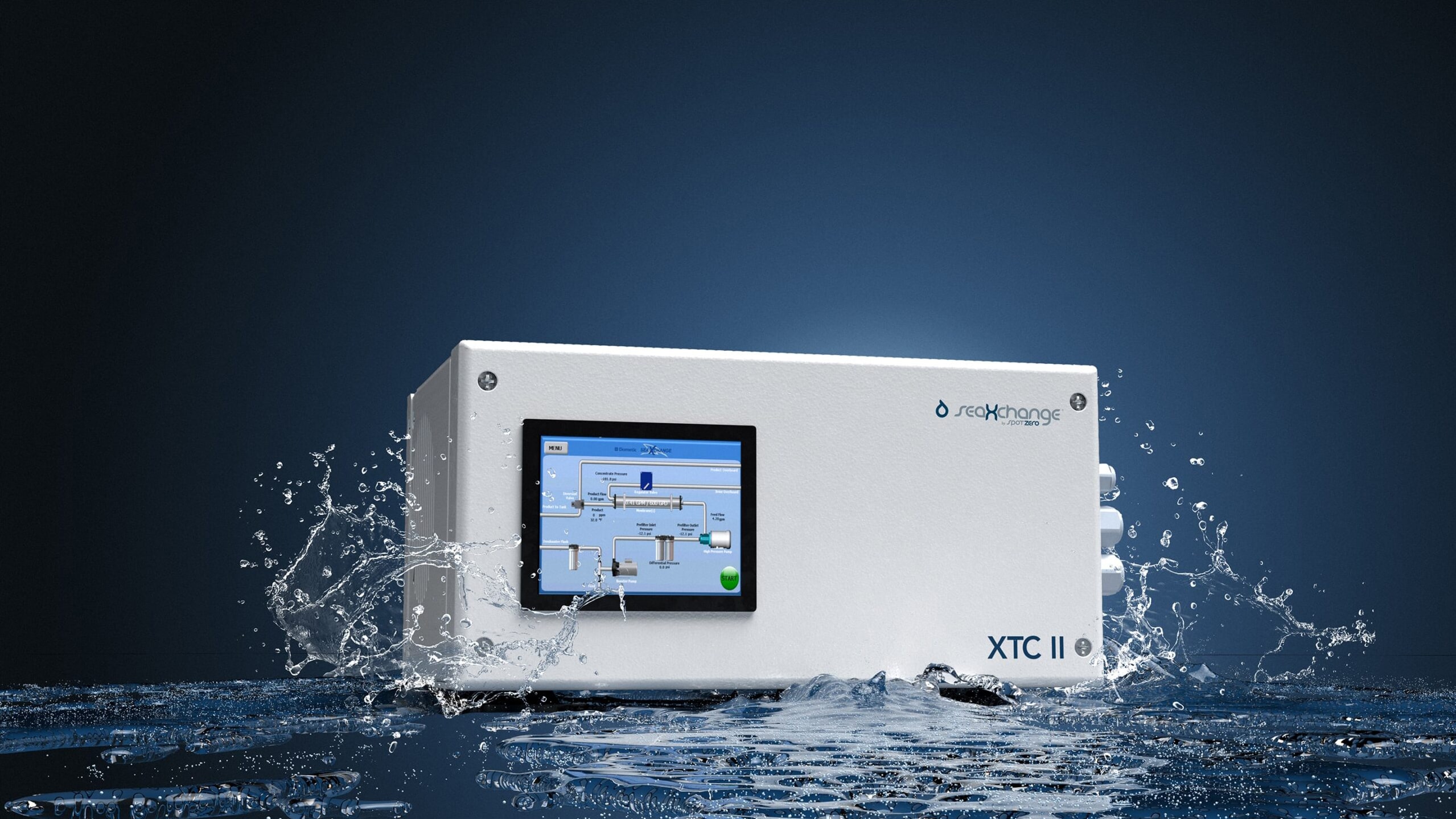
Spot Zero ® WaterPurifiers
Create the purest water on earth. Go ahead. Make the mountain streams jealous.
Water Maker or Dock Water
Spot Zero Water
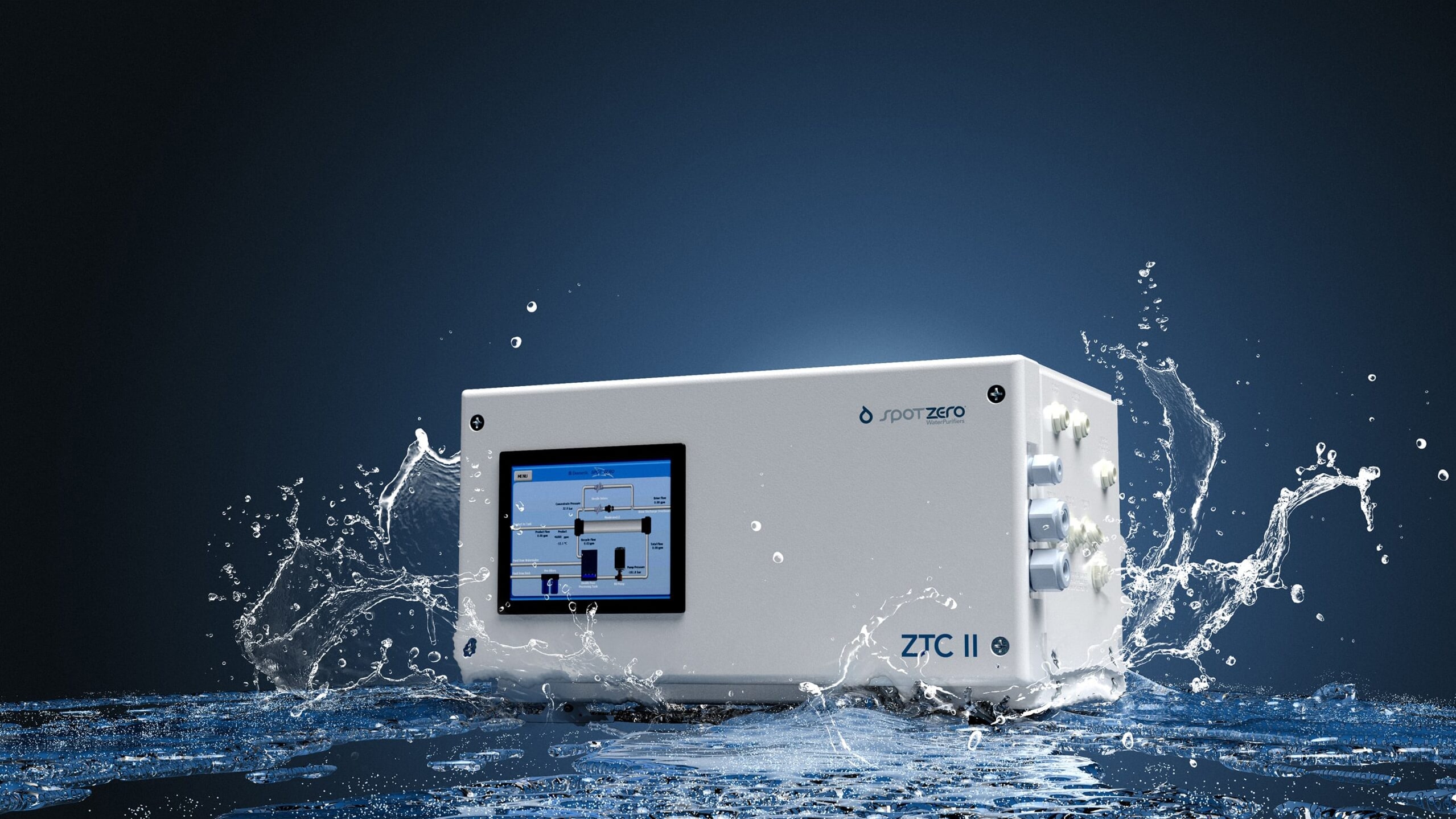
SeaXchange ® + Spot Zero ®
Harness the power of Poseidon and turn seawater into freshwater …then purify it. And your boat will look amazing too.
Water Maker
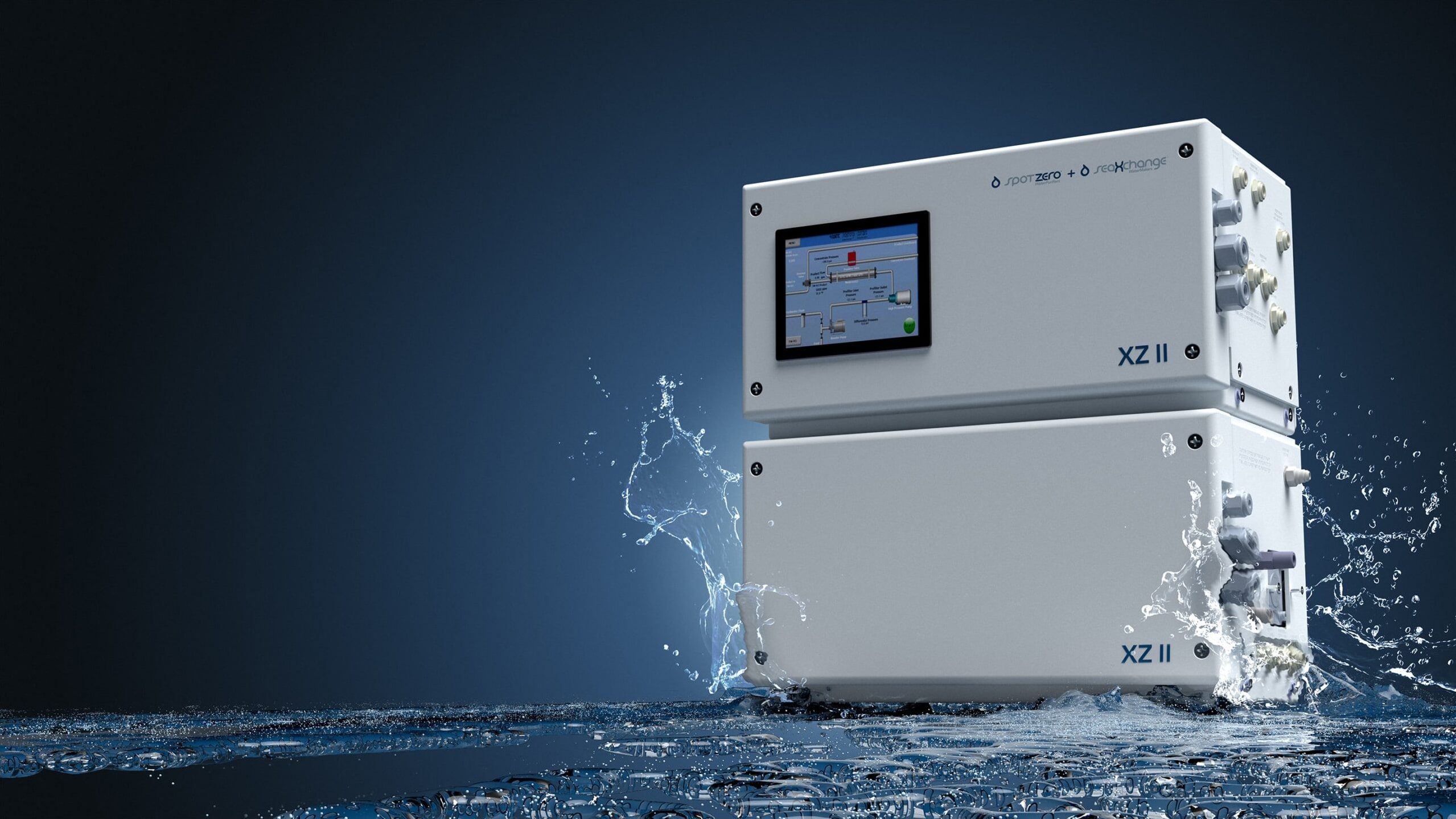
Custom Units
Design a fully customizable water system to suit your needs.
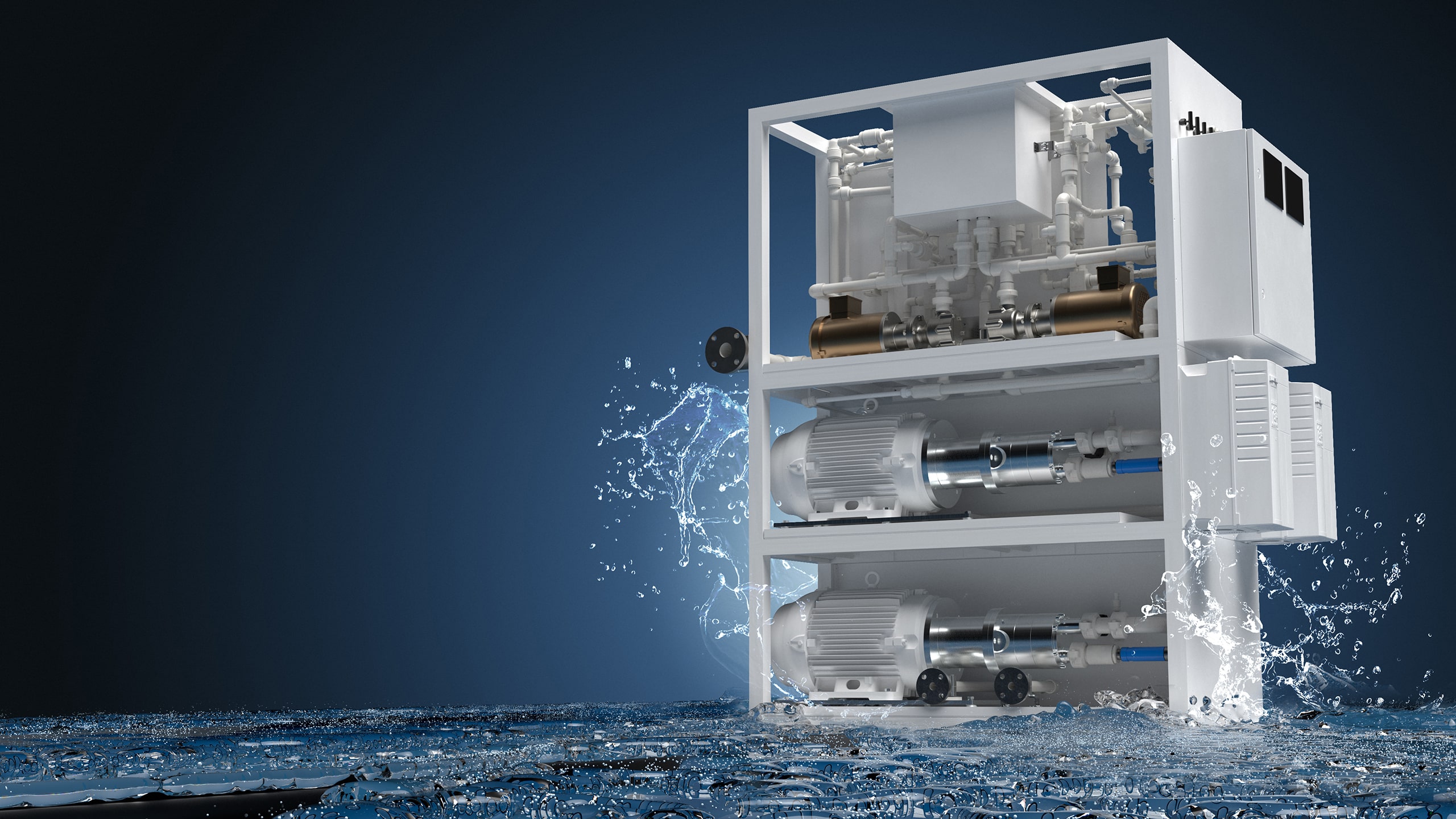
It’s not magic. It’s pressure.
Our Spot Zero ® freshwater purification systems and SeaXchange desalination systems have perfected the Reverse Osmosis process.
Success Stories
What the Pros Have To Say
Real captains. Real results.

CAPT. CASEY HUNT
74′ Spencer
“We’ve been using Spot Zero ® for 8 years and I can’t imagine life without it. It pays for itself in the first 6 months. We’re saving a ton by not hauling 50 cases of water and not having to shammy, wax, and repaint the boat every few years.”

CAPT. JOHN CRUPI
45m Dorothea III
“Running an expedition yacht that travels over 20k miles per year, I consider Spot Zero ® systems to be part of our critical equipment onboard and I wouldn’t build a boat without one.”

CAPT. BART VAN DER HORST
125′ Westport
“Our cleaning routine used to be so inefficient. With the Spot Zero ® system, it’s saving us 6-8 hours per washdown. We’ve also saved over $10,000 just in bottle water.”

CAPT. KEN DRUMGOOLE
70′ Hatteras Sportfish
“Our boat was new in 2015 and we haven’t had to polish it even once. It’s been pretty impressive not getting the hard water build-up on the boat. We evaluated several models when building our boat. Nothing compares to the Spot Zero ® water system.”
Contact Spot Zero ® to determine which reverse osmosis system is right for you.
Find a Dealer
Practical Boat Owner
- Digital edition

Boat water tank treatments tested
- Ben Meakins
- March 25, 2015
Potable water is a valuable resource on a boat – but how do you keep tank water fresh? Ben Meakins and the PBO team test water treatments and filters to find out
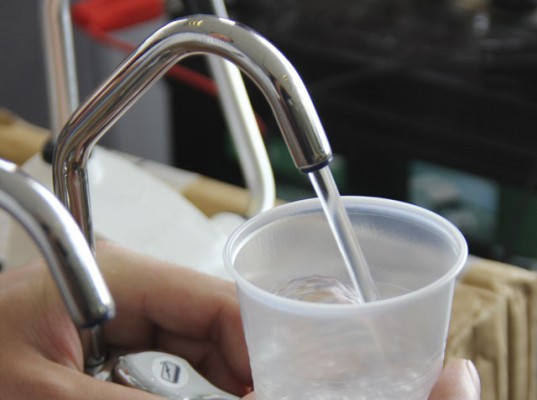
The ‘tank taste’ you get from a boat’s fresh water tank can be pretty unpalatable, especially if you’re feeling seasick. Mostly this taste is disguised when used for cooking, but it makes your plain drinking water unpleasant and can produce a thick scum on top of your tea – not to mention making said tea taste terrible.
To overcome the drinking water problem many sailors drink only bottled mineral water and use the boat’s tank water just for cooking. But the plastic bottles take up a lot of space, they’re not exactly environmentally-friendly and it’s a shame not to be able to use tank water for its intended purpose.
But how do you keep tank water tasting fresh? We tested seven methods of making your drinking water more palatable, ranging in price from 54p to £355. These could be divided into the following groups:
- Activated carbon filters These work by passing the water through a carbon filter to remove the taste and smell. It won’t remove bacteria from the water, even though some filters have silver to inhibit the growth of bacteria in the filter. On first use, they must be flushed to remove black carbon particles.
- Sub-micron filters If you want to remove bacteria and other nasty stuff from the water, you’ll need a sub-micron filter. These can remove impurities down to 0.1 micron. Some of the filters on test have additional filters which use surface absorption and a polarised casing to remove chemicals and heavy metals. Many of these filters require a significantly higher pressure to work. Some solely sub-micron filters won’t do anything about taste and smell, however – you’ll need a charcoal filter for that, too.
- Additives We tried a couple of proprietary tank treatments, Aqua Clean, a chlorine-based product, and Aqua Sol. These can be added to the tank water to sterilise it, and are recommended for sterilising and flushing out a tank. They might make the water safe to drink, but they do often result in an unpleasant taste. Following a tip on the PBO forum we also tried using lemon juice as a water treatment.
How we tested them We needed water with a suitably unpleasant taste and odour, so took a sample from a flexible fresh water tank on a small yacht and then passed some through each filter after following the manufacturer’s instructions to flush and prime each unit. We used a sample of each water to make a cup of tea, each brewed for 10 seconds, before adding 10ml of milk by syringe. We then conducted a blind taste test, with testers scoring each sample for flavour, aftertaste and odour.
Control Samples
Plain tap water WATER *** TEA **** Straight from the tap at the PBO office in Poole, Dorset, this got a surprisingly low score in our blind taste test for the water, with a slight chlorine aftertaste, but was otherwise perfectly drinkable. For the tea it scored well. Plain tank water
Untreated tank water WATER * TEA * Unsurprisingly this got the lowest score of all. It had a stale flavour, a plasticky odour and a lingering aftertaste that one tester described as ‘old socks’ that got worse with time. Tea made with this water had the most scum on top and a plasticky taste, with a hint of the chlorine (Milton) used to sterilise the tank in the winter.
Water treatments tested
You can read the individual reviews of each of the following products by clicking on the title. For our conclusions, scroll down….
AquaClean Tabs
Lemon Juice
Water filters tested
Penguin Hydropure
Nature Pure QCII
Aquatiere Super Water Filter
Jabsco Aqua Filta
Whale AquaSource Clear
Seagull IV X-1
PBO Verdict

We found untreated tank water most unpleasant…
The tank water was unpleasant to drink – and adding any of the treatments to it served only to alter the taste rather than improve it. All of the filters tested improved the flavour and aftertaste, however.
The Seagull IV and Nature Pure QC filters gave by far the best taste improvement, and also remove bacteria and other substances, making even contaminated water safe to drink.
The charcoal filters all made the water more palatable, with the Jabsco Aqua Filta coming out best of these in our tests. You will need to ensure the water is safe to drink, ideally with the addition of a treatment before it is filtered. We found that the filters removed the taste of chlorine when Aqua Sol was added in a mild dose and this combination of a subtle water treatment to kill bacteria and a charcoal filter to remove any bad taste would seem to be the way forward if you want safe drinking water on a budget.
The Nature Pure system, while not cheap, does all this while delivering a taste close to that of mineral water.
- Skip to main content
- Skip to primary sidebar
- Skip to footer
The Boat Galley
making boat life better
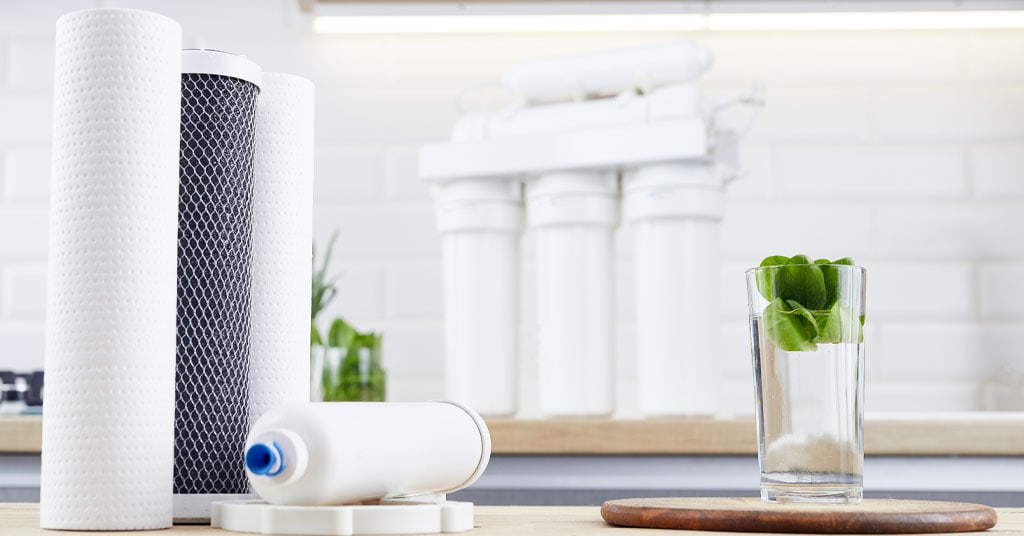
Choosing the Right Water Filter for Your Boat
Published on August 17, 2023 ; last updated on August 16, 2023 by Carolyn Shearlock
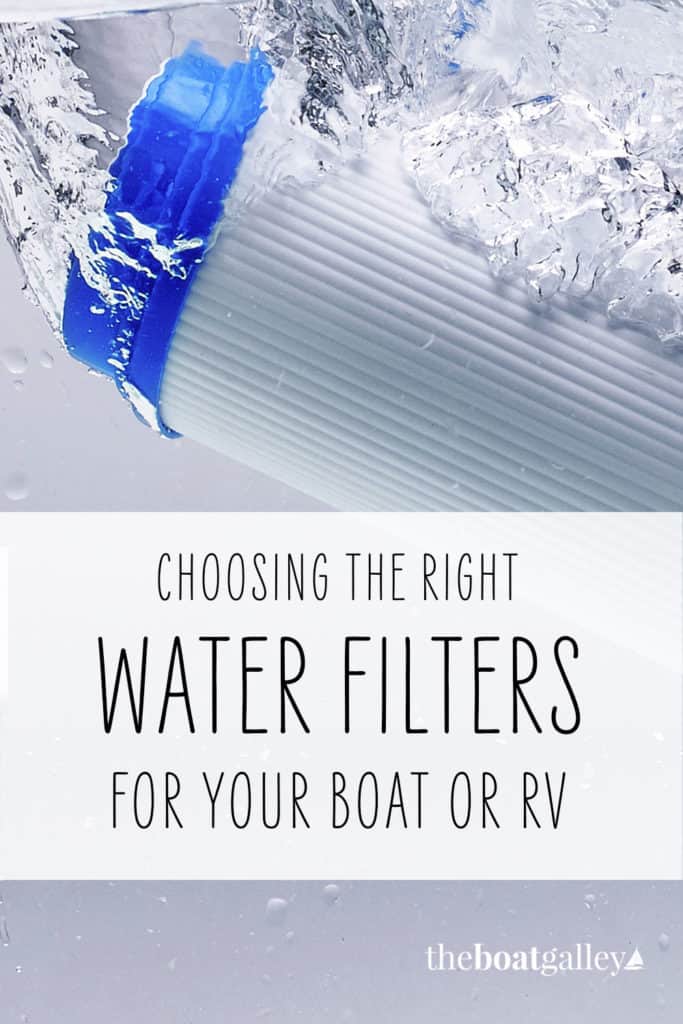
Choosing the right water filter for your boat can be a daunting task. What are the differences between various types? Does it really matter if I’ve got the right microns?
I’ve looked all over—in stores and on the internet—and never been able to find much in the way of a “which filter is right for me?” guide. The longer we cruised, and used filters for various purposes, the more I had to learn about the topic. The following summarizes what I know. But always check manufacturer documentation if using a filter as part of another system, such as a watermaker. I can give some general guidelines below, but your system may have specific requirements.
Basic Differences Between Water Filters
Water filters—called “cartridges” by manufacturers—have 3 basic differences from one to another:
Obviously, you need the right size to fit your housing. The standard size used in most housings is 10″ by 2-1/2″ diameter. Note that although they call it 10″ long, the filters actually measure about 9-3/4.” While many other sizes are available, this is the size that I discuss in my article on water filtration systems and in this article.
You will find six types of common filters : pleated paper, string wound, polyspun, carbon wrapped/impregnated, granular carbon and carbon block. More on these below. The various types do look different. This can help if you don’t know the language on the filter’s label.
Micron Rating
Filters all have a micron rating on the label. The smaller the number, the finer the filtration. I’ve seen them as large as 40 microns, but 20, 10 and 5 are far more common. The smallest I’ve seen is 0.5 microns. Finer filtration can slow down water flow. But that is usually more of a problem in houses (where people expect greater flow) than in boats.
You really don’t have a choice on the size, so I’ll look at the various types and the micron ratings. Prices that I list are for buying online in the US or in big-box stores. In other locations, prices can vary considerably!
One online source that has pretty good prices is DiscountFilters.com , which graciously allowed me to use their images of the various filter types.
The Right Water Filter for Your Boat Use
Now that you know the basic differences, what else do you need to know to choose the right water filter for your boat use? Well, some will remove dirt and sediment. And others also remove chlorine as well as bacteria and microorganisms.
Dirt and Sediment Filters
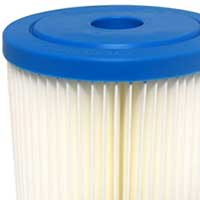
Pleated filters. Pleated filters only filter dirt and sediment from the water. They do nothing to improve taste or remove chlorine or microorganisms. They are fairly inexpensive, generally costing less than $5 each.
Pleated filters come in two varieties: pleated paper and pleated polyester. The paper are generally the cheapest but can deteriorate quickly, while the polyester are far more bacteria- and chemical-resistant.
Pleated filters are most often used as a prefilter for the salt water intake on watermakers. Most people don’t use them in drinking water systems.
Most watermaker companies recommend a 5 micron pleated polyester filter as a prefilter, but you should check the specs for your particular system. Many cruisers try to rinse these and reuse them, with varying success.
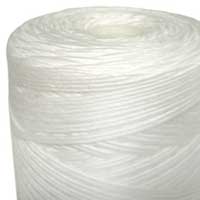
String wound. String wound filters look just like they sound — a bunch of string wound around. As with the pleated filters, these are for dirt and sediment only and are used almost exclusively for watermaker prefilters.
Many of these now have dual filtration levels, with water passing first through a larger micron level to get the larger particles, then a smaller level. The theory is that the filter will last longer before it gets plugged up.
String wound filters are relatively inexpensive, often under $5 but $7 or $8 for the dual-layer ones. They cannot be rinsed and reused.
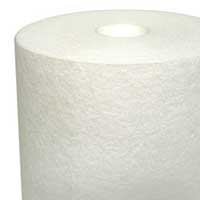
Polyspun filters. Polyspun filters are the third style of dirt and sediment filters.I’ve found several reviews stating that polyspun filters seem to last slightly longer than string wound, and may be slightly cheaper. Again, they cannot be rinsed and reused.
Our Experience: We used all three of the above types for our watermaker prefilter, depending on what was available where we were. Focus more on getting the correct micron rating for your application and don’t worry which of these types you’re getting.
All of them work well for dirt, sediment and rust; none will improve taste, remove chlorine or filter bacteria or other microorganisms.
Carbon Filters
Then we come to the three types of carbon filters: carbon-wrapped/impregnated, granulated carbon and carbon block. All three will improve taste and remove chlorine, but they do have important differences in how well they do it and what else they do.
These are generally used in drinking water systems and sometimes as part of a watermaker fresh water flush system (to remove chlorine if you use bleach in your water tanks).
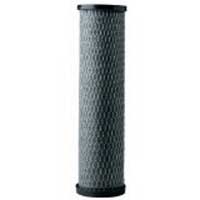
Carbon wrapped or impregnated. These are generally the cheapest of the carbon filters. They are also the type of carbon filter that is easiest to find. If you are simply seeking to improve the taste of your water, most will work fine.
However, it’s important to note that they REDUCE the chlorine in the water, they do not totally eliminate it. Do not use these in any application — such as the freshwater flush system of a watermaker — where total removal of chlorine is needed. Any amount of chlorine will damage a watermaker membrane.
Generally, these are polyspun or, less often, pleated filters that have a covering of carbon. Most often, they are offer filtration levels of 2 to 20 microns. I’ve never seen one that is fine enough to remove bacteria or other microorganisms. If you just want something that will remove most dirt and chlorine from your drinking water, these will work. They typically cost just under $10.
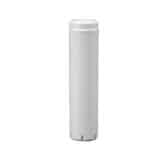
Granulated Charcoal. The big thing to know about granulated charcoal filters is that they do little to filter sediment from the water. Further, they do not come in fine enough filtering to remove giardia. They are easy to identify as they have a solid plastic outer casing.
Granulated charcoal filters are reasonably good at removing chlorine, volatile organic compunds, pesticides and many other man-made substances. They typically come in 2 to 20 micron filtration levels.
The best use for granulated charcoal filters is simply to remove bad taste from drinking water. Like the charcoal wrapped filters, they do not sufficiently remove chlorine to use on a freshwater flush system with a watermaker if you use bleach in your tanks (or if you alternate watermaker water with city water that could contain chlorine).
Granulated carbon filter typically cost $10 to $12.
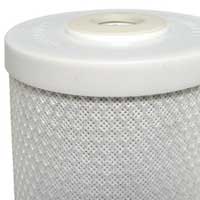
Carbon block filters. The most all-encompassing filters are carbon block filters, but that doesn’t mean that just any carbon block filter will do.
Only the finest 0.5 micron carbon block filters will remove giardia and cryptosporidium, both of which can cause severe diarrhea. The 0.5 micron carbon block filter is also virtually 100% effective in removing chlorine, and is what most watermaker manufacturers recommend on their freshwater flush systems to ensure that no chlorine reaches the membrane.
Our boat came with a Seagull filter for our drinking and cooking water, and they use a proprietary filter cartridge. However, if we’d had to install a filter ourselves, the 0.5 micron carbon block filter is what we would have used for our drinking water.
A carbon block filter’s effectiveness at removing sediment is dependent upon the micron rating of the filter, although water with visible dirt and sediment will quickly foul the highest quality carbon block filters. Carbon block filters can remove small quantities of heavy metals, but they can’t cope with high concentrations and shouldn’t be relied upon for that.
Carbon block filters can be made from any of several materials; coconut shell carbon is the best, but also costs a little more. A 0.5 micron carbon block filter will cost $18 to $20 (some brands more).
While sediment-only filters can simply be changed when the flow rate has noticeably lessened, carbon filters will lose their full effectiveness long before taste is affected. If you are using a very fine carbon block filter, be sure to change it according to the manufacturer’s directions in order to get the full benefit.
One final note: we could never be certain of finding the really good carbon block filters in Mexico and Central America, and would buy them on trips back to the US and take them back in our luggage. Since I could never be certain of finding them in local stores, so I simply resorted to buying them online. Try DiscountFilters.com .
Hopefully this helped you understand just a little more about choosing the right water filter for your boat.
Related Posts
- Boat Water Filtering
- Do You Need a Watermaker?
- Four Pieces of Useful Boat Gear (no one notices)
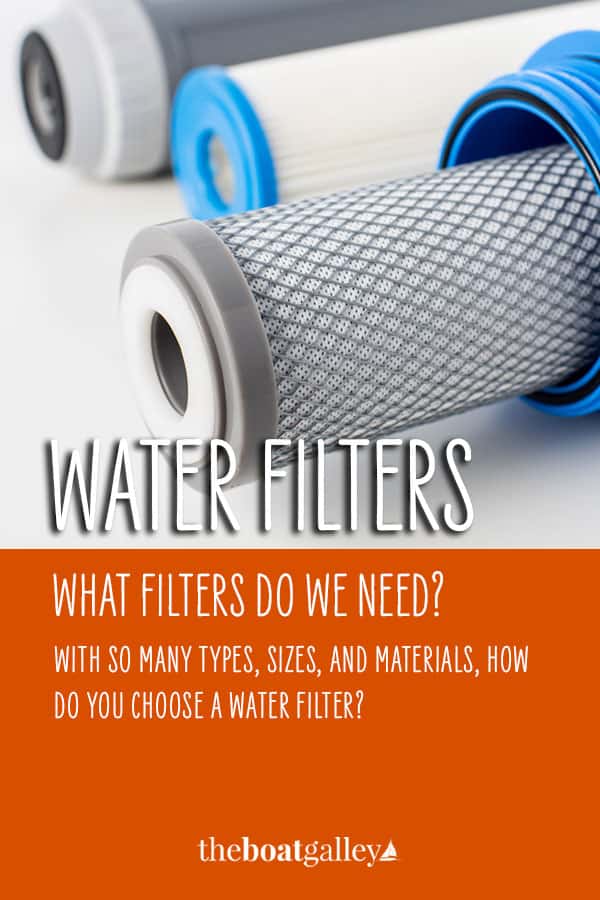
And check out our other courses and products
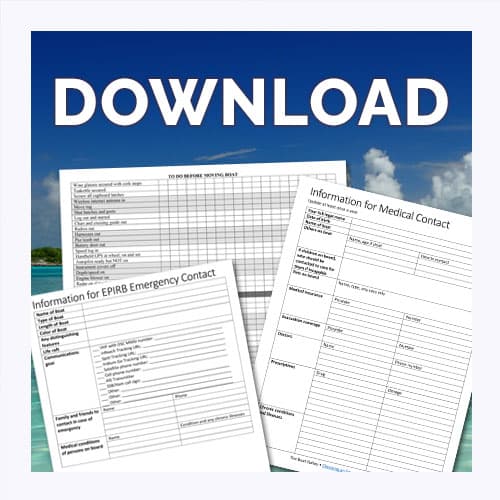
Find this helpful? Share and save:
- Facebook 601
- Pinterest 98
Reader Interactions
Carolyn Shearlock says
December 19, 2013 at 7:13 am
Hi June! That’s one topic that I haven’t written about, partially because there is such variety between systems. Most systems have some way to divert a bit of product water into a glass and then you can use a tester like this one (this is the one we had and many other boats did too, costs under $20) — there’s a sticker on the back of it to tell you what acceptable tds (total dissolved solids) levels are.
Membranes will fail in one of two ways — either plug up so that the output just gets lower and lower, or be “destroyed” so that it’s not doing as good a job and the tds level will get higher and higher until it’s unacceptable.
The Boat Galley says
December 19, 2013 at 12:52 pm
It really depends on the size (microns), the water quality, and how much water you put through it. Putting a large volume of somewhat dirty water through a very fine filter will cause it to plug up much more quickly than half as much clean water going through a coarse filter. Typically, they’d last about 3 months for us . . . but whenever we were heading to out of the way places, we’d assume they’d only last a month and stock up. The non-charcoal filters will slowly allow less and less water through, and you can simply change them when it gets unacceptably low. The charcoal filters will usually be labeled with how often to change them.
Stu Meisner says
May 30, 2014 at 9:38 pm
Can a hand pump such as a small fynspray be used with a system with fine filters one could buy at a plumbing supply. In your initial article you said that these plumbing supply systems could be used with a foot pump, but does that include both a hand pump and fine filters ? Stu
May 30, 2014 at 10:44 pm
I haven’t personally tried it. A lot will depend on how much “suck” the pump can develop — a foot pump is pushing the water through the filter, which is much more efficient than a hand pump, which by its very nature, is right at the outlet and hence trying to suck the water through the filter. I’d check with the manufacturer of the hand pump if it’s critical.
June 24, 2014 at 6:33 am
I like the extra protection that the 0.5 micron filters give. Assuming you have a standard 10″ housing, this is the one I’d go with (be sure to check the specs to make sure it’ll work for you, I’m making assumptions about your system): http://www.discountfilters.com/sediment-carbon-water-filters/everpure-dev910853/p111751/
June 24, 2014 at 8:58 am
Ok thanks I ordered that filter, now I’m looking at standard housings… Many to pick from… Do you know of any solid rated models?
June 28, 2014 at 10:29 am
I don’t really know that any are particularly better or worse than others. A handy feature to have is a pressure release button — makes it easier to unscrew the bottom when you need to change the filter. Also, get one that uses standard plumbing parts to connect to your water hoses, not any special proprietary quick connects (if one fails, it can be hard to find a replacement).
Read more in my article about Water Filtration Systems: https://theboatgalley.com/water-filters/
Matthew Dehn says
February 3, 2021 at 7:52 pm
There is another type of filter cartridge out there called a DI filter– you can run water from a Reverse Osmosis watermaker through one of these DI filters and you have water that is suitable for your batteries! especially nice not to have to find/carry distilled water back from the grocery store.
November 2, 2015 at 5:40 am
Some people do re-use them after back flushing and spraying. If you’re just using them to remove sediment, it should be okay to reuse them if the flow is okay.
January 18, 2016 at 12:24 pm
Storing water for any length of time — particularly in clear containers — will let algae grow. The best way to stop it is bleach . . . but that’s one of the things we’re trying to filter out. Instead of filtering into containers, we just filter (with the dispenser) as we need it.
Gene Magee says
July 19, 2016 at 5:57 pm
Hey Randy! Many years later, but what UV system do you use?
September 21, 2016 at 6:42 am
Glad it helped!
July 3, 2017 at 2:13 pm
I’d use a 0.5 micron solid charcoal block filter OR get a Seagull filter, which is the best filter I’ve ever found: https://amzn.to/3JGtPlP
November 15, 2018 at 6:15 am
1. UV should be the last thing before the faucet. 2. I don’t know that any filter removes lime — it seems you need a water softener and/or reverse osmosis (that’s different from a reverse osmosis watermaker) 3. Remove filter and use food-grade antifreeze (aka RV antifreeze) in the hoses: https://amzn.to/3CW3Tii
September 7, 2023 at 10:23 pm
Thank you for all of the wonderful information. We went with the Seagull filters for our pressurized system. Still struggling with figuring out how to filter our manual foot pump water in the galley and head. It is a dual stroke pump so it gets stuck using a Seagull filter. Any suggestions?
September 8, 2023 at 5:58 am
If you have a problem with the Seagull, I think you’ll have a problem with any sort of a filter. I know several people who have Seagulls with foot pumps, but I think it’s the fact that you have a different type pump. In order to put a filter on that line, you might have to change the pump.
Leave a Reply Cancel reply
Your email address will not be published. Required fields are marked *
Each week you’ll get:
• Tips from Carolyn • New articles & podcasts • Popular articles you may have missed • Totally FREE – one email a week
SUBSCRIBE NOW
- Questions? Click to Email Me
- Visit Our Store

You are using an outdated browser. Please upgrade your browser to improve your experience.
- Water Tanks & Purification
Accumulator Tanks | Bilge Pump Switches | Bilge Pumps | Calorifiers (Water Heaters) | Freshwater Pumps | Pump Spares | Shower Pumps | Sinks, Taps & Showers | Wash Down Pumps | Water Tanks & Purification |
We stock a range of solutions for storing water aboard your boat, from flexible water tanks from Plastimo to the rigid Force 4 Diablo Smart Tanks. We also sell a range of water filters and purifiers to keep your fresh water tanks and pipes clean and free from bacterias.

- Chandlery Below Deck
- Engine Oils, Lubricants & Protection
- Engines Inboard & Outboard
- Fuel Tanks & Cans
- Gauges & Engine Room Equipment
- Holding Tanks & Accessories
- Jerry Cans, Tanks & Fuel Supply
- Pumps & Water Systems
- Showers, Sinks & Taps
- Strainers & Filters
- Toilets & Accessories
- £6.00 - £56.00
- £56.00 - £106.00
- £106.00 - £156.00
- £156.00 - £206.00
- £206.00 - £256.00
- £256.00 - £330.00
- Triangular 100 Litre
- Triangular 55 Litre

Trade-In Your Old Water Softener!
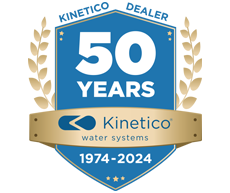
Marine Water Filtration Systems
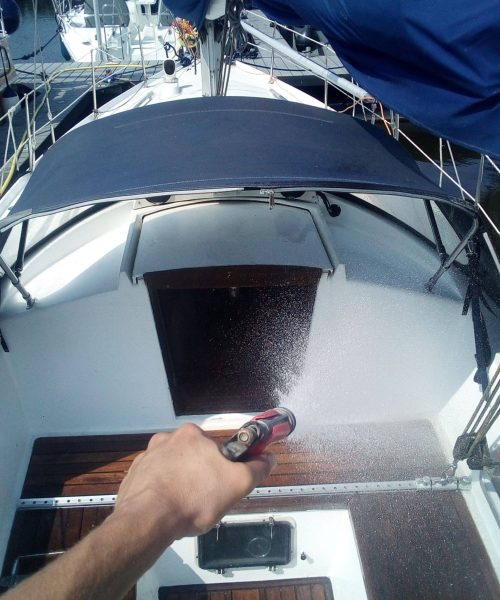
Soft Water for your Marine Vessel
The difference between softened water versus hard water is a significant one that you can see immediately. A compact water softener is a great feature to have on your boat. Much of the water found around boating routes is hard water. All freshwater sources likely contain varying quantities of calcium and magnesium. Depending on your water supply’s geographical location, your water may also contain elevated levels of iron and manganese.
Drinking Water Station for your Marine Vessel

Water filtration systems for any boat owner.
- Boat water purification systems eliminates the need for bottled water.
- Soft water filtration systems ensure soft water for boat usage.
Ensure your marine vessel is free of hard water residue and minerals that can damage fixtures and often do more harm than good. Soft water will preserve the exterior of your boat as well as its pipes and fixtures.
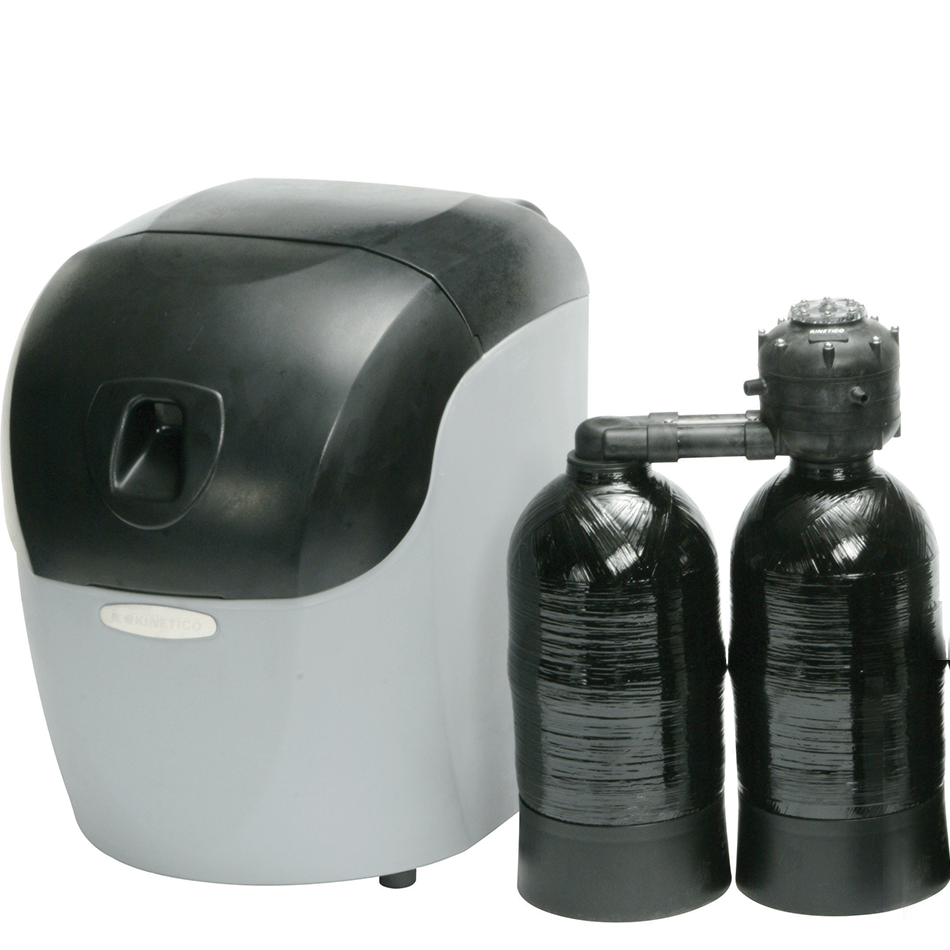
1411 Vernon Odom Blvd Akron, Ohio 44320
- Privacy Policy
- Sustainability
- Terms of Use
- Privacy and Cookie Policy
- Recent Online Orders
- Shipping & Returns
- Pay My Bill
Boiling hard water will dissolve minerals and affect the taste and texture of food. Chlorine and chloramine can result in a ‘bleaching’ effect making vegetables look dull and less colorful.
Iron and calcium deposits cause build up in pipes and drains causing malfunctions and breakdowns. Hard water will cause scaling which deposits minerals onto the surface and can drastically reduce the life of a water heater.
We offer a variety of Kinetico commercial water softener systems, from the Kinetico CP Series to the Kinetico Hydrus 3 tank options that meet water demands by providing continuous water flow.
When consistent water purity and quality a must, then it is time for a Kinetico commercial reverse osmosis system (also known as an ‘RO’). Various RO series available to meet your needs.
Spots on glass and flatware caused by hard water are unappealing to customers. A water softener will not only help to eliminate hard water deposits, but it will also help to preserve the life of your appliances and dishware. Without the hard scale build-up, dishwashers run more efficiently, and bathroom fixtures will remain free from rust or film caused by hard water
Iron in water will leave an orange-brown staining in both sinks and toilets. Iron can also cause corrosion to plumbing pipes and faucet fixtures. Having an irregular pH balance of your water will result in blue-green staining around your sink drains.
How Can I Stop Relying On Bottled Water?
Water that looks, smells or tastes funny is the primary reason most people turn to bottled water. Kinetico eliminates these real concerns and provides a boundless supply of clean, fresh water that makes teas taste crisp, juices come alive with flavor and a simple glass of water a refreshing delight. You also save on the expense of bottled water and reduce the amount of plastic waste that ends up in our landfills.
Why are there spots on my car after I wash it?
You have dissolved minerals in your water. These minerals are left behind when the air dries your car. With Kinetico, your water is just water, no minerals — so spots no longer form.
Why Are My Clothes, Towels, And Sheets Stiff?
You have dissolved minerals in your water. In the wash, these minerals get trapped on the fibers in your clothes, sheets, and towels and also cause detergents to stick to fabrics. As if that weren’t enough, dryers then bake the minerals and leftover detergent into your laundry, dulling the colors and leaving the fabric scratchy and stiff. With Kinetico, your water is free from unwanted minerals — so your towels stay soft and last longer.
How Can Better Water Make My Appliances Last Longer?
Hard water is brutal on appliances. The minerals in it build up inside pipes, sapping water pressure, using more energy and making your appliances work harder and wear out faster. Your water heater, for example, is likely the second-biggest energy user in your home. With Kinetico, you’ll spend 30% less on energy to heat your water, and your appliances will last longer too.
How Safe is My Water Source?
It depends. If you have a private water source, the safety of your water depends on whether it comes in contact with natural or man-made contaminants. One of the many benefits of Kinetico is that our approach returns your water to its pristine state, so you know it’s always right and ready for your family to enjoy.
Water from a municipal supply is generally safe, although it likely contains chemicals that, though are proven to reduce bacteria and viruses in water, can dry your skin and hair and are potentially harmful to consume. It’s also possible that some contaminants may “slip in” through aging pipes en route to your home.
Why Are There Spots on My Dishes and Appliances?
You have “hard water,” dissolved minerals in your water. These minerals are left behind when your dishwasher or the air dries your dishes. With Kinetico, your water is freed from these minerals — so spots no longer form and your appliances stay clean and bright and last longer.
Why is My Drinking Water Cloudy?
Cloudy, murky or grayish water is usually caused by dissolved or suspended solids. This is also known as “turbidity.” Water can become turbid naturally or from land disturbances such as construction, storms and urban runoff. Whatever the reason, murky water gets in the way of enjoying the water in your home. After Kinetico, your water is restored to its clean, clear self and once again becomes a welcome friend for drinking.
How Does Bad Water Affect My Living Room?
Hard water has dissolved minerals in it, which can leave unsightly spots on hard surfaces like windows, tables, floors, silverware, dishes and glassware. These spots are often difficult to remove. Minerals can also cause discoloration or orange, blue or green staining depending on your water.
How Can I Stop Relying on Bottled Water?
The primary reasons for choosing bottled water include bad odors, funny tastes or orange or cloudy water. Kinetico eliminates these problems and provides a boundless supply of clean, fresh water that makes teas taste crisp, coffee more rich and a simple glass of water a refreshing delight. When you cook with Kinetico meals taste more flavorful too. You also save on the expense and hassle of bottled water and reduce the amount of plastic waste that ends up in our landfills.
Why Does My Water Have Funny Tastes or Odors?
Natural minerals and bacteria, common chemicals used in water treatment (such as chlorine), or man-made contamination may be acting behind the scenes to give your water its funny tastes or odors. Kinetico thoughtfully and completely removes the sources of funny tastes and odors so your water is clean, fresh and enjoyable.
Why Do I Have Dry Skin and Hair?
There are two common causes. The first is hard water, which prevents soaps and shampoos from lathering fully and rinsing away completely, leaving a film on your skin and hair. The second cause is the chemicals used to disinfect public water supplies, such as chlorine. When you have Kinetico, these problems stop cold, and your hair and skin will welcome the change.
Why Are There Stains in My Sink, Bathtub and Toilet?
Stains can be caused by iron or minerals in your water, or because your water has a lot of natural acid in it, or both. As anyone who has tried to clean them can tell you, these stains can be difficult to remove. With Kinetico, your water returns to its natural clear, clean self — and stains become a thing of the past.
Why is My Bath Water Cloudy?
Cloudy or turbid water is usually caused by dissolved or suspended solids. Water can become turbid naturally or from land disturbances such as construction, storms and urban runoff. Whatever the reason, murky water gets in the way of enjoying the water in your home. When you have Kinetico, your water will be restored to its clean, clear self and once again becomes a welcome friend for bathing.
There are two common causes. The first is hard water, which prevents soaps and shampoos from lathering fully and rinsing away completely, leaving a film on your skin and hair. The second cause is the chemicals used to disinfect public water supplies. When you experience life with Kinetico, these problems stop cold, and your hair and skin will notice the change immediately.
Why Are My Clothes, Towels and Sheets Stiff?
You have dissolved minerals in your water. In the wash, these minerals get trapped on the fibers in your clothes and also cause detergents to stick to fabrics. As if that weren’t enough, dryers then bake the minerals and leftover detergent into your laundry, dulling the colors and leaving the fabric scratchy and stiff. With Kinetico, your water is free from unwanted minerals — so your towels stay soft and last longer.
Water makes up about 85% of fountain drinks, so any impurities in the water can greatly affect the taste and odor.
Water high in minerals will affect the taste of coffee causing it to taste more bitter, since the minerals reduce the coffee’s flavor.
Metals, minerals or bacteria may cause your ice to be discolored and cloudy. This is a sign of hard water which can also affect the taste.
Filtered water should be used when preparing food, as unfiltered water can greatly impact the flavor of a dish.

Please verify you are a human
Access to this page has been denied because we believe you are using automation tools to browse the website.
This may happen as a result of the following:
- Javascript is disabled or blocked by an extension (ad blockers for example)
- Your browser does not support cookies
Please make sure that Javascript and cookies are enabled on your browser and that you are not blocking them from loading.
Reference ID: e0fd8188-767f-11ef-92cb-bf5a205e1739
Powered by PerimeterX , Inc.
Your cart is empty
FREE GROUND SHIPPING ON ALL OF OUR PREMIUM MARINE WATER FILTER SYSTEMS!

CLEARSOURCE MARINE WATER FILTER SYSTEMS
Clearsource premium dockside water filter system.

Engineered for dockside filtering for your fresh water tank.
Rugged, industry-exclusive free-standing chassis. Premium filter elements. Oversize, high-flow filter housings. All stainless steel fittings
CLEARSOURCE PREMIUM ONBOARD WATER FILTER SYSTEM

Engineered for onboard water filtering from your fresh water tank. Beautiful, corrossion-free stainless steel mounting chassis. Premium filter elements. Oversize, high-flow filter housings. All stainless steel fittings. Unique, three-canister architecture for enhanced filtration and treatment of specialty problems like odors and rust.
BETTER WATER
Contaminants range in size. Silt and sediment range from 50 - 100 microns.
Bacteria are roughly 5 microns and giardia cysts are even smaller.

Many filters are rated at 100 microns – or not at all. Our second-stage carbon block filter element is rated at 0.5 microns. It traps contaminants other filters miss.
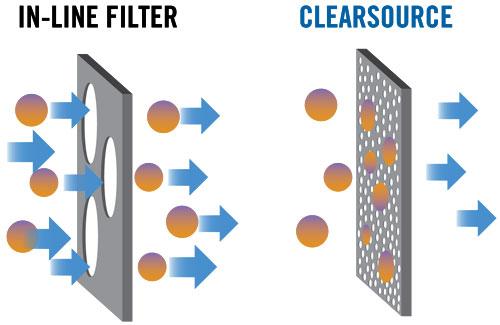
BETTER WATER FLOW
For dockside filtering, in-line filters restrict water flow. The Clearsource dockside marine water filter uses extra-large filter canisters, giving you much better water flow, even under heavy demand. In our testing laboratory, we measured 4.5 gallons per minute of water flow with a standard in-line filter, and 6.5 gallons per minute from our system. That’s more than a 40% improvement!
For onboard filtering, we use the same extra-large canisters for unbeatable water flow from your fresh water tank.
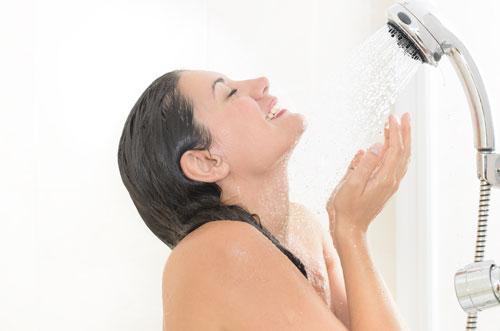

BETTER BUILT
At Clearsource, our systems are built with the finest filter elements available, heavy-duty filter housings with leak-proof buttress-style threading, all stainless steel components, and a heavy duty, powder-coated metal chassis.

- BOAT OF THE YEAR
- Newsletters
- Sailboat Reviews
- Boating Safety
- Sails and Rigging
- Maintenance
- Sailing Totem
- Sailor & Galley
- Living Aboard
- Destinations
- Gear & Electronics
- Charter Resources
- Ultimate Boating Giveaway

Maintaining Your Marine Water Tank System
- By Steve D'Antonio
- Updated: January 9, 2014
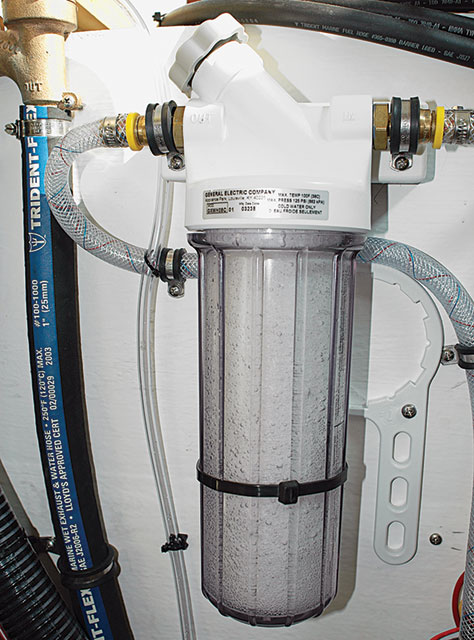
Water Filter
Clean water is not an onboard luxury: It’s a necessity. Drinking, bathing, cooking and cleaning all demand a high degree of purity in your potable water system. Begin the analysis of your system with your marine water tank. What is it made from? Has it ever been opened and inspected? Ideal potable water tank materials include 316L stainless steel; fiberglass that is coated with FDA-approved gelcoat; or epoxy and virgin linear polyethylene. Because of its susceptibility to both galvanic and poultice corrosion, aluminum, while used occasionally for water tanks (as well as integrally aboard aluminum vessels), is less than desirable in potable water applications.
Like all onboard tankage, water tanks should be equipped with inspection or cleaning ports. If your tank is so equipped and you’ve never peeked inside, now’s the time to determine if detritus has accumulated. Don a sanitary rubber glove and swab your finger across the inside of the tank. If it feels slimy or emits an odor, the tank’s interior needs to be scrubbed with detergent, rinsed and sanitized.
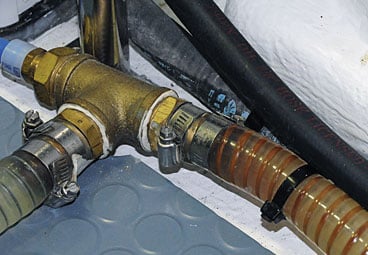
| |The bottom right hose in this image relies on steel wire reinforcement, which unfortunately is rusting. Seek other alternatives.|
Next, inspect your plumbing. All hoses , tubing and pipes should be rated for potable water use. If they’re not, there’s no telling what sorts of particles or compounds may be sloughing or leaching into your water supply. Hose, plastic tubing and plastic pipe (including fill and vent hoses) should all be emblazoned with at least one of the following designations: NSF61, FDA Approved or Potable Water Approved. Despite its widespread use, clear hose should be avoided due to its propensity to support algal growth. Conversely, opaque polyethylene, copper and PVC plumbing are well suited to potable water applications.
Anyone installing or working on potable water systems must strive to be as careful and hygienic as possible. Tank openings and plumbing ends must remain closed, taped over or otherwise covered unless they are actually being worked on at the time.
Filters can present a first, second and even third line of defense against potable water contamination. When filling tanks, running dockside water through a high-volume inline filter will ensure clean water is brought aboard. (Note: Dockside hoses are notorious for lacking a potable water approval rating.) However, filters containing activated charcoal should not be used for this purpose, as they will neutralize the chlorine contained in municipal water supplies, which will likely allow biological growth within the tank and plumbing. Also, liveaboard sailors who plan on leaving filters on the dock should make sure they have opaque canisters, as clear canisters are ideal breeding grounds for algae.
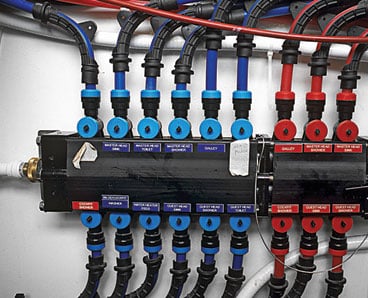
| |Proprietary potable-water plumbing systems like this one are not only reliable and compact, they are also specifically designed and suited for fresh drinking water.|
Onboard filters that service the entire boat can be installed immediately downstream of the vessel’s water supply pump, and in this case activated charcoal, along with a particulate filter, are an excellent option. These need not be specialized “marine” filters; household units work very well, and replacement elements are both readily available and inexpensive. Alternatively, you can opt to filter only the water that you intend to drink, cook or wash utensils with, using a “point of use” or under-counter unit. These low-volume specialized filters usually incorporate a carbon component and typically rely on a compact filter and dedicated countertop spigot.
Steve D’Antonio offers services for boat owners and buyers through Steve D’Antonio Marine Consulting ( www.stevedmarineconsulting.com ).
- More: boat maintenance , How To , monthly maintenance , ship's systems , systems
- More How To

Best Practices for Boat-Show Shopping

Grease the Wheels of Your Boat: A Guide to Proper Lubrication

A Bowsprit Reborn: A DIY Renovation Story

Rigging Redo: Our Switch to Synthetic
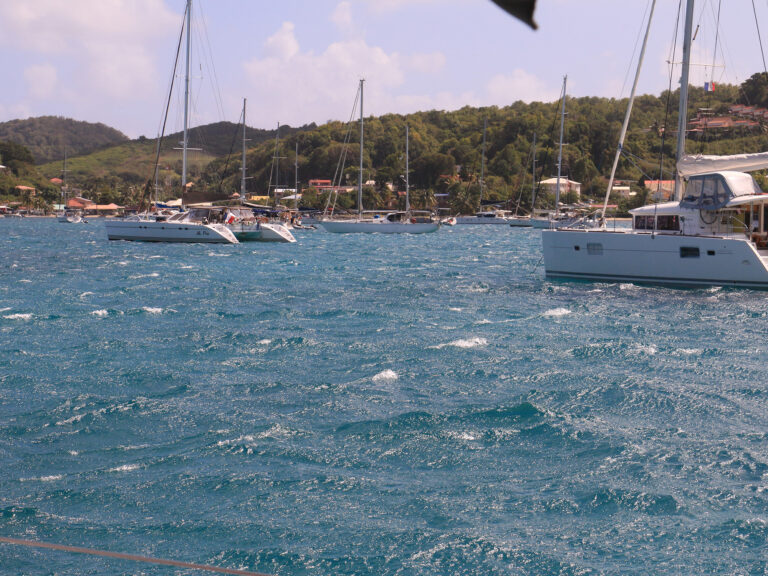
Understanding Wind in the West Indies
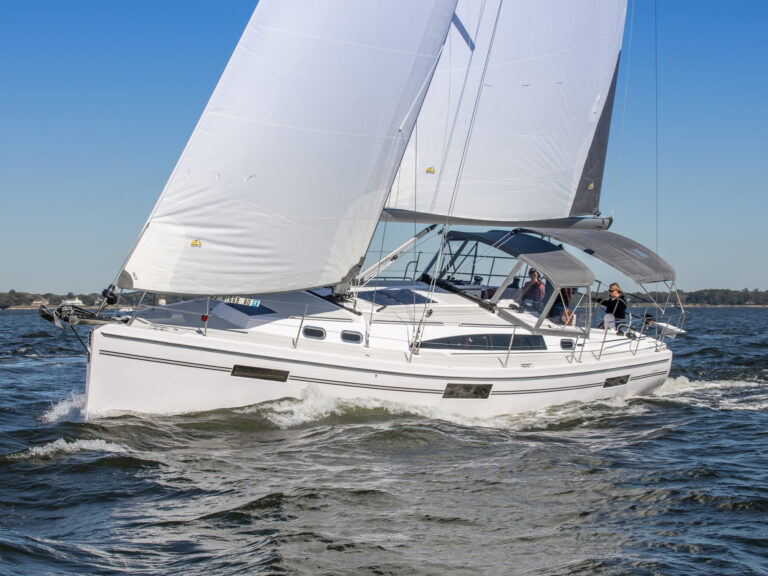
Catalina Introduces the 6 Series
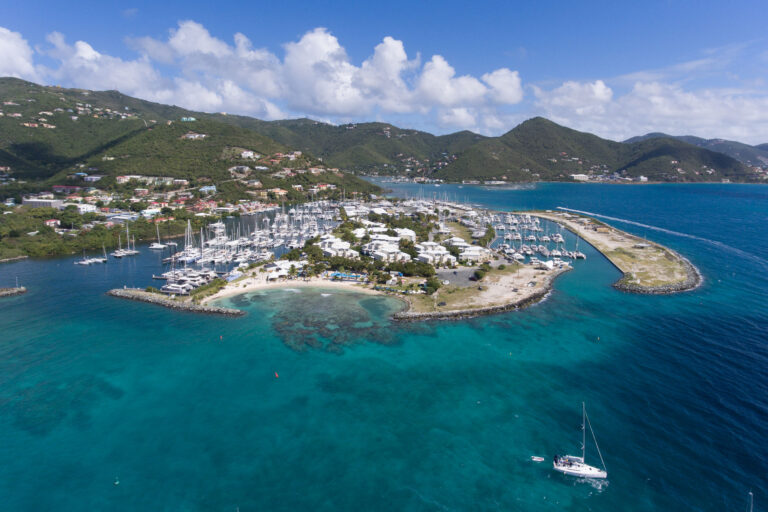
At Your Service

Welcome to SeaWater Pro
Enjoy the purest water without limitations - easy and reliable. Purchase your modular, portable, or compact boat salt water desalinator today!
Fast Express Shipping.
Industry Best Warranty!
Have a question?
Most popular systems.

Mini Portable Watermaker AC Powered

Watermaker: AC 110/220 Volt 970 Watts 20 GPH, Single Membrane.

Watermaker: AC 110/220 Volt 970 Watts, 40 GPH Dual Membrane
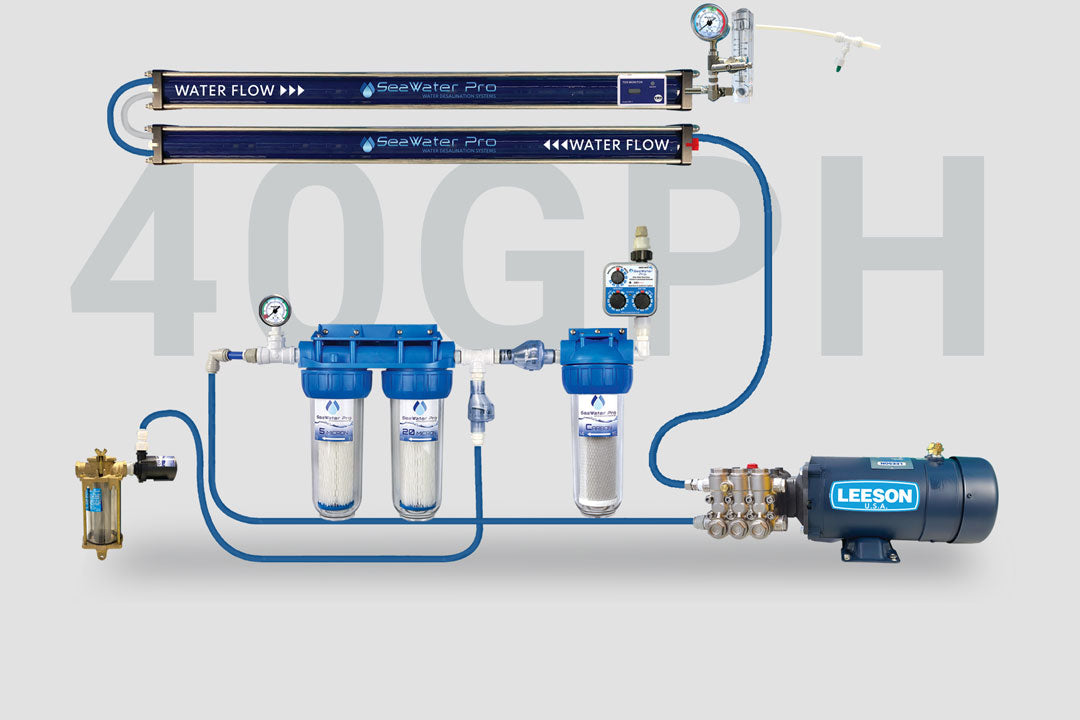
Watermaker: DC 24 Volt 900 Watts, 40 GPH Dual Membrane
Made in the usa, lightweight and durable, noncorrosive parts, patented pressure regulator, quick assembly guide, ac powered 14 gph desalinator, customer installations gallery.

SWP Modular & Portable Watermakers
Welcome to SeaWater Pro, the premier provider of high-quality watermakers for boats and portable watermakers for all your marine adventures. Our cutting-edge technology and reliable products will ensure that you have access to clean, purified seawater wherever you go. With our easy-to-use and reliable watermakers, you can say goodbye to bulky storage tanks or worry about running out of fresh water. Our compact and efficient systems are designed specifically for marine use, making them perfect for boats of all sizes. Whether you're cruising the open seas or anchored in a secluded cove, our watermakers will provide you with a steady supply of fresh, drinkable water. At SeaWater Pro, we understand the importance of safe and clean drinking water while at sea. That's why our portable watermakers are equipped with advanced filtration systems that remove harmful contaminants and bacteria. Look no further than SeaWater Pro for your next, most reliable boating adventure investment!
Latest Articles
Watermakers vs. traditional water storage: a comparative analysis, demystify desalination, charting your course: your first steps into the exciting world of the sea industry, how do i know which seawater pro watermaker i'll need for my boat.
- Identifying which power source you'd like to run the system. AC or DC power?
- Determine how many gallons per hour will you need to maintain your lifestyle, 17 or 40 GPH.
How much does each SeaWater Pro System weigh?
Every modular watermaker system ships in 3 boxes.
- Box 1: Components (tubing, filters, boost pump, comet pump, fittings, etc.) - 40 lbs.
- Box 2: Motor - 40-48 lbs. (varies by motor option)
- Box 3: Membrane Vessels 15 lbs. per vessel, 30 lbs. each for stainless steal option.
Can I install a SeaWater Pro system myself?
Yes! We have videos and instructions for our customers on the resources page .
Do I need a control panel?
Do I need a control panel? Click to watch video
How do I rinse my system after I use it?
Rinse Timer Setup Guide Click to learn more about using your system's rinse timer!
How often do I need to pickle my watermaker?
How to pickle my SeaWater Pro system! Click to watch our short video guide.
Your Cart is Empty
But your water tank doesn't have to be :)
- Choosing a selection results in a full page refresh.
- New Sailboats
- Sailboats 21-30ft
- Sailboats 31-35ft
- Sailboats 36-40ft
- Sailboats Over 40ft
- Sailboats Under 21feet
- used_sailboats
- Apps and Computer Programs
- Communications
- Fishfinders
- Handheld Electronics
- Plotters MFDS Rradar
- Wind, Speed & Depth Instruments
- Anchoring Mooring
- Running Rigging
- Sails Canvas
- Standing Rigging
- Diesel Engines
- Off Grid Energy
- Cleaning Waxing
- DIY Projects
- Repair, Tools & Materials
- Spare Parts
- Tools & Gadgets
- Cabin Comfort
- Ventilation
- Footwear Apparel
- Foul Weather Gear
- Mailport & PS Advisor
- Inside Practical Sailor Blog
- Activate My Web Access
- Reset Password
- Customer Service

- Free Newsletter

Blue Jacket 40 Used Boat Review

Catalina 270 vs. The Beneteau First 265 Used Boat Match-Up

Ericson 41 Used Boat Review

Mason 33 Used Boat Review

How to Create a Bullet-Proof VHF/SSB Backup

Tips From A First “Sail” on the ICW

Tillerpilot Tips and Safety Cautions

Best Crimpers and Strippers for Fixing Marine Electrical Connectors

Polyester vs. Nylon Rode

Getting the Most Out of Older Sails

How (Not) to Tie Your Boat to a Dock

Stopping Mainsheet Twist

Fuel Lift Pump: Easy DIY Diesel Fuel System Diagnostic and Repair

Ensuring Safe Shorepower

Sinking? Check Your Stuffing Box

What Do You Do With Old Fiberglass Boats?

Boat Repairs for the Technically Illiterate

Boat Maintenance for the Technically Illiterate

Whats the Best Way to Restore Clear Plastic Windows?

Stopping Holding-tank Odors

Giving Bugs the Big Goodbye

Galley Gadgets for the Cruising Sailor

The Rain Catcher’s Guide

Sailing Gear for Kids

What’s the Best Sunscreen?

UV Clothing: Is It Worth the Hype?

Preparing Yourself for Solo Sailing

R. Tucker Thompson Tall Ship Youth Voyage

On Watch: This 60-Year-Old Hinckley Pilot 35 is Also a Working…

On Watch: America’s Cup

On Watch: All Eyes on Europe Sail Racing

Dear Readers
- Belowdecks & Amenities
- Living Aboard
We tasked our resident chemical engineer to help us tame the terrible in marine sanitation.

In recent years, PS testers have investigated holding tank chemicals ( Fighting Odor with Chemical Additives ) in concert with ongoing investigations of sanitation hoses and holding-tank vent filters. We’ve investigated some old-school deodorizing products with disappointing results, but we also tested the latest generation of holding tank treatments that use enzymes, nutrients for bacteria, and live bacteria to kill odors by more natural—and often more effective—means. Our readers quickly responded, suggesting we look at some of their personal favorite products, so thats what this test is about.
Talk about holding tank chemicals, and many sailors think of that familiar port-a-potty smell—disinfectants and surfactants mixed with deodorizers. And yes, these products are still being used in holding tanks, usually by those who don’t know any better. Some chemicals also claim to help liquefy the waste and prevent clogging. While larger boats can use vent filters ( PS , March 2012) and enhanced ventilation to reduce odors, the only practical option for the small-boat owner with a portable toilet is some sort of treatment in a can.

The newer, enzyme-loaded products are known as bio-augmentation treatments, because they supplement the natural biological processes. Some work primarily by providing nitrate as both a nutrient and as an alternative oxygen source for bacteria. Bacteria convert nitrate to nitrite or nitrogen, liberating oxygen and encouraging aerobic decomposition.
Several products claim to contain live bacteria to aid in digestion, but in our last test, we were unable to develop cultures. This time around, however, we did get a culture on some products, and one of these, Bactank T3 , turned out to be one of the most effective.
In the end, the complex chemistry and shifting nature of holding tank conditions make it difficult to pinpoint all of the chemical processes at work. Given the variables that can impact this particular test, the best we could do is measure what we found and add a little growth-fostering air to the biologically active treatments.
WHAT WE TESTED
Our previous test looked at many of the big players in the recreational vehicle market. This time, we included products from smaller companies, those recommended by our readers, and those developed for home septic systems. We only included one product from our previous test, Yara Chemicals Odorlos , which we used as a control.
Two familiar manufacturers in this round are Raritan, the New Jersey-based maker known for its marine toilet systems, and the Southern California-based Forespar, a longtime player in the marine market. Other contenders included Happy Camper, which as the name implies, is geared toward the camping market; Rid-X, a familiar septic tank product; and Zoal No-Flex, a chemical powder recommended by a Practical Sailor reader.
HOW WE TESTED
For the test, we created a series of small holding tanks containing real sanitary waste. The sanitary waste was supplied by a 20-pound iguana named Ziggy. (Ziggy typically poops in a tray of water, and we knew the mixture to be plenty foul.) This was supplemented with additional sanitary waste during the start-up period each spring. Seawater flush was used, as the odor problems associated with seawater are known to be more severe (the result of bacteria-reducing sulfate into more odorous sulfide chemicals). Tank tests were supplemented with field testing aboard a boat on Chesapeake Bay.
There is only one true measure of effectiveness: whether the vent stinks when the head is flushed. Since calibrating noses presents certain challenges, its nice to have an analytical number to compare as well. A hydrogen sulfide monitor (the type used to test sewer gas) was used to back-up our sniff testing. At regular intervals, testers gave each sample a sniff rating in addition to recording the hydrogen sulfide levels.
OBSERVATIONS
Some of the products worked faster than others, but don’t expect overnight results. All of the products seemed to perform much better in this round, whether environmental factors came into play, we’re not sure. We had no products registering the high hydrogen sulfide numbers that we saw in earlier reports. As for odor control, this group of products also seemed to go easier on the perfumes and dyes that bothered testers in the first round.
Temperature makes a difference. This round of testing took place in the late spring, when temperatures had not yet reached the summer highs ripe for odors. Fall and winter sailors, and those in cold-water areas (Maine, Pacific Northwest), may find that chemicals that claim to use live bacteria will be less effective on their boats. Ventilation also seemed to be less effective during the cooler-season testing, but smell was less noticeable then, too. Generally, you’ll see less odor problems in true winter weather.
Again, all of the products claiming to contain live bacterial cultures tested negative for bacteria. Control inoculations flourished, however, quickly producing both bacteria and fungus. But, we are not certain this is too important. What was clear from our previous test was that chemicals that add oxygen, along with better venting, can materially affect odor in less than 12 hours, far quicker than an aerobic culture could blossom. Finally, it is important to avoid adding toxic chemicals-formaldehyde and related compounds, and bleach being the most common holding-tank offenders. These destroy the biomass that promotes a healthy holding tank.
Perhaps more than any other element in the sanitation system, the health of the holding tank can have a great effect on odors. In many cases, the source of the odor is not the waste, but the water. Like most ocean sailors, we used seawater flush for our testing. Seawater is known to contribute to odors. Many newer systems use freshwater, and very little of it. Others use several pints per flush. Temperatures vary, and ventilation varies.
Individual tanks will be subject to a number of variables that our test tanks were not. To compensate for this, we tested all the chemicals more than once under different conditions. Those that showed the most merit in early testing underwent additional testing. All of the recommended products did well, and we encourage you to try each and see which one works best for your special circumstances.

A bacterial spore powder packaged with a small scoop for metering out the dose. We got a positive culture and super odor control. It wasn’t the fastest— it took a week to get going— but it eliminated virtually all odor and kept it that way for over a month, until testing was discontinued on that tank.
Bottom line: A rare convergence of price and performance, this was an inexpensive product that really worked.
Forespar Refresh
The Forespar Refresh was the fastest-acting product tested, making a remarkable difference in two days. It also continued to work for three weeks, making it one of the longer-lasting formulas. The makers describe this as a biodegradable product that uses a special

chemistry instead of enzymes. This is a new product and certainly one to watch. The product line includes other deodorizing products that we did not have a chance to investigate.
Bottom line: If you’ve got guests coming for the weekend and need something that works quickly, we Recommend Refresh.
- Happy Camper
We like the name of this product, and it did make us happy campers, with an important caveat. It is a bacterial spore powder with absolutely no masking odors, which was nice. It comes packaged in a variety of ways, including self-dissolving pouches. Slower to start than some, the Happy Camper did work, and it remained reasonably effective after two weeks. However, because it contains zinc, which is harmful to the environment and is a problem for wastewater treatment plants, we would not use it ourselves.

Bottom line: PS Not recommended. We wouldn’t consider this a top-tier product in this test field, and the inclusion of zinc is unnecessary in our view.
Odorlos did well in Round 1, so we kept it as a control for the second round to see how it compared with the other products. Containing only sodium nitrate as an active ingredient, this product is quite effective when holding tank ventilation is provided. We liked the absence of dye, mess, and perfumes.
While not the most effective in our testing, Odorlos is a solid performer with a large following. We tested the 10-pack of powder packets, the most popular option with cruisers and the one that requires the least storage space; it is also available in liquid form.
Bottom line: Odorlos is not the cheapest, nor the most effective, but it is consistent, a good bet for most odor problems that can be handled with a chemical treatment. PS Recommended.
Raritan C.P. (Cleans Potties)
This product from toilet-maker Raritan is a head-cleaning product. We did not test Raritan CP as a holding-tank treatment. Raritan makes KO for that application. Stated to be 100-percent bacterial, it was the top-performing head cleaner, eliminating odor and cleaning while you’re away.
Testers were impressed. It also produced the most rapid cultures in dip-slide testing, the only clear correlation that we found.
Bottom line: Recommended as a head cleaning product and Best Choice for toilet bowl maintenance.
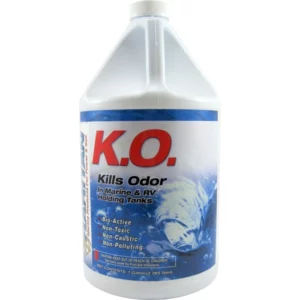
Raritan Kills Odors
Raritan KO (Kills Odors) is supposed to be similar to Raritan CP (Cleans Potties). It performed well, but it also was the most expensive product we tested (on an annual basis).
It wasnt the fastest, nor the longest lasting, but it did reduce odors significantly. Given the results of the Raritan CP, we were surprised it didnt do better.
Bottom line: A solid performer that knocks down odors. Recommended.
This product is probably the best known hardware-store septic tank treatment. It is marketed for a different purpose, reducing solids in septic tanks. However, a few sailors have said that it works. Rid-X has this to say: RID-X has not been tested on recreational vehicles (RVs); therefore we cannot recommend using it in RVs. After reading that statement and witnessing its poor odor control, we suggest leaving this product for home use.

Bottom line: This is a different animal designed for a different set of problems. Not recommended.
Zoal No-Flex
A white chemical powder containing an oxygen source, Zoal No-Flex behaves something like Odorlos and Camco TST Ultra Concentrate, products included in Round 1.
It is reasonably effective, but not as good as the Camco TST, which is about half the price per year.
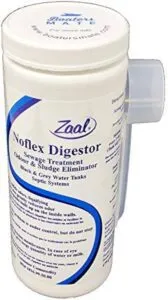
Bottom line: This product worked well and was the second cheapest in this group.
Conclusions
As we found in the last test, chemical treatments that relied on disinfection, surfactants, and deodorants were better than nothing. However, most were messy, and all left a characteristic portable-toilet smell. You can’t mask head odor, or scour it away. We do not recommend this class of products.
We like the enzyme and biological (bacterial) products best, but users should be aware that some of these products might not perform as well in cold weather. However, odors in cooler temperatures also tend to be less.
Our experience in Round 2 highlighted the same challenges as Round 1. Few products seemed to work well on boats that sit unused for three weeks or longer, which can prevent the exchange of air. None were effective when the air exchange was overly restricted by a long vent line. The conventional wisdom that a vent line can be no longer than five feet, no smaller than -inch inside diameter, and have a rise no more than 18 inches, has proven sound.
Good tank ventilation helps significantly. Larger vents will help reduce odors in boats that are left unattended for weeks at a time. In a larger tank or one where good ventilation is very difficult to achieve, active ventilation offers a viable and robust approach. We used a homemade bubbler system, similar to Grocos Sweet Tank System, and this offered some improvement over natural ventilation.
Click the following links for the results from Round 1, reported in the February 2012 issue , and our March 2012 test of vent filters, with tips on ventilations.
Of course, there is another, better, way to help agitate the holding tank and promote the natural processes that fight odors: Go sailing more often.
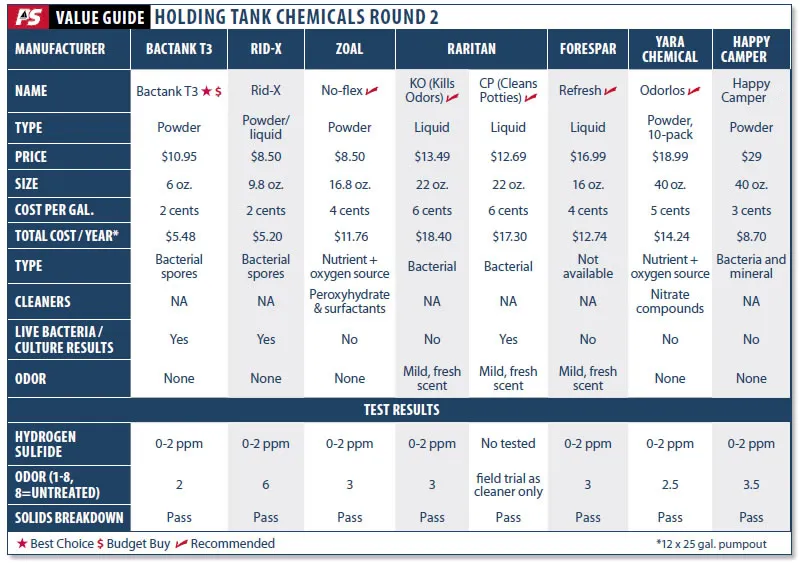
- NaturE-zyme
- Zaal No-Flex
This article was first published on November 19, 2012 and has been updated.
RELATED ARTICLES MORE FROM AUTHOR
Great review!
Do you have any comment about Walex Bio-Pak enzyme treatment? Can Noflex Digestor be used with enzyme or probiotic treatment?
What do you suggest for re claim tanks? (carwash recycling water tanks).
Stopping Holding-tank Odors: recommended product Bactank T3 is available where? links are dead and company seems to be gone.
I can see old stock a few places. The corporate link is gone, the phone number is dead, and the Facebook page has contained nothing but political bile unrelated to Bactank since January 2017 (the site does not appear to have been maintained since then, when the last home page title photo was loaded). It seems the page just stayed up.
Our guess is that the owner retired. She celebrated her 80th birthday in 2017. The PS article was written in 2011. I would also guess that old stock is way beyond it’s expiration date at this point and will not work as tested.
LEAVE A REPLY Cancel reply
Log in to leave a comment
Latest Videos
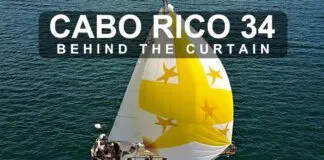
Cabo Rico 34 Boat Review

Super Shallow Draft Sailboat: The Leeboard Sharpie

Hans Christian 41T – Boat Review

Seven dead after superyacht sinks off Sicily. Was the crew at...
Latest sailboat review.
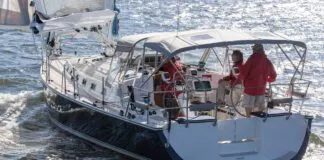
- Privacy Policy
- Do Not Sell My Personal Information
- Online Account Activation
- Privacy Manager
Water Infrastructure
Crews complete mile-plus pipepull under virginia's james river.

Crews installed the 5,700-ft-long section of pipe under the Newport News shipping channel in the James River in an operation that lasted more than a day.
Photo courtesy Garney Construction
A team working on the Hampton Roads Sanitation District’s Boat Harbor Treatment Plant Conversion and Transmission program reached a milestone in May when they completed the installation of more than 5,700 ft of large bore pipeline under the Newport News shipping channel in the James River in a continuous pipepull operation that lasted more than 24 hours.
The 42-in.-dia DR11 HDPE pipe will be part of a wastewater force main connecting from a new pumping station being built on the Newport News, Va., side of the river to the sanitation district (HRSD)’s Nansemond Treatment Plant in Suffolk, Va. To install it, the team used horizontal directional drilling.
The team originally planned for a water-to-water directional drill of about 4,000 ft, but realized they could eliminate one of the water platforms by extending the drill, says Paul Longo, senior associate and senior project manager at Dewberry, the lead engineer for the underwater transmission pipe installation.
“Extending it would add almost a half-mile of drill length and would push the limits of the material, the drilling operations, the mud handling systems—really the limits of the trenchless installation industry for this particular pipe at such large diameter and being HDPE,” he says.
The team—which also includes contractor Garney Construction; Huxted Trenchless, which performed the drill; Brierley Associates, which worked on the geotechnical and trenchless design; and Seaward Marine, which provided pile and platform installation—determined what they would need to make the longer pipepull work. The team performed supplemental geotechnical investigations and spent seven days conducting a pilot drill to verify conditions under the river.
“That gave us confidence in the ability to actually go through with the execution and make it ultimately successful,” says Jordan Carrier, executive vice president of pipe east at Garney.
While steel pipe would have had a higher safe allowable pull force, the team needed to use HDPE due to the corrosive marine environment. They found a HDPE pipe manufacturer in Texas, Performance Pipe, that was able to meet their specifications for ovality tolerances and ability to handle external loads. The team also used a pipe pusher from German-based equipment manufacturer Prime Drilling that was custom-designed for large diameter HDPE. The lead time on sourcing the pipe pusher was upwards of a year, Carrier says.
The team’s work platform on the river housed the pipe pusher, and they positioned the pipe through it prior to pull back to allow it to pass through freely or with additional compression. They were then able to use the pipe pusher to add compression to the back and relieve the tension from pulling, Longo says.
“We’re talking 5,700 ft of pipe,” Longo says. “You can’t even see the end of it.”

The soft soil under the river provided a challenge, particularly with the long length drilling. They dealt with it by installing the drill path deep, Longo says. The elevation of the bottom tangent of the drill was more than 170 ft below the water surface.
The team spent months constructing the pipeline, fusing it and staging it before the start of the operation to pull it into place on May 1. The actual pull of the mile-plus-long pipe started that day and continued for 39 hours until the evening of May 2 in an operation involving dozens of workers, according to Garney. The pull needed to be done in one continuous operation because of the difficulty of resuming after a stop with ground friction, and because of the risk of something happening out of their control in the busy shipping channel, Carrier says.
“Once you start, you don’t stop,” he says.
The team will place 4.5-in.-thick concrete mats over the pipe to protect it against anchor strikes and other potential sources of damage.
“It’s such a critical asset that HRSD can’t afford any sort of impact to the pipeline after it’s installed,” Carrier says.

The next stage of work will be installing another 3.5 miles of pipe across the river using marine open cut installation. Longo says trenching, installing, ballasting and covering the pipe will take between 12 and 18 months.
HRSD estimates the cost of the underwater pipe installation at $136 million. It is part of the larger Boat Harbor Treatment Plant Conversion and Transmission program, which is being done as part of its Sustainable Water Initiative for Tomorrow (SWIFT) initiative, to eliminate the discharge of sediment from a treatment plant in Newport News, Va., into the James River.
The Boat Harbor Treatment Plant site is being converted into a pump station to send wastewater to the treatment plant across the river in Suffolk at an estimated cost of $196.5 million, according to HRSD. Another 7,000 ft of pipeline is being installed on land at an estimated cost of $38 million.
Garney has four of the five projects associated with the program. Besides the underwater force main pipe installation, the firm is working on the land-based portion of pipe installation, Nansemond Treatment Plant advanced nutrient reduction improvements and Sustainable Water Initiative for Tomorrow (SWIFT) facilities.
The full project is scheduled for completion in late 2026.
Share This Story

Post a comment to this article
Report abusive comment.
Restricted Content
You must have JavaScript enabled to enjoy a limited number of articles over the next 30 days.
Related Articles
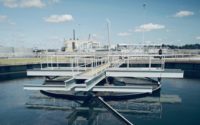
Virginia Water Infrastructure Project Gets Boost From EPA Loan

EPA Orders West Virginia Chemical Plant to Treat Discharges for PFAS
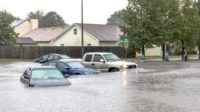
Virginia Beach, Va., Plans $567M in Flood Protection Projects
The latest news and information, #1 source for construction news, data, rankings, analysis, and commentary.
Copyright ©2024. All Rights Reserved BNP Media.
Design, CMS, Hosting & Web Development :: ePublishing

IMAGES
VIDEO
COMMENTS
Learn about different types of water filtration systems for boats, including reverse osmosis, distillation, and charcoal filters. Compare five of the best water filter systems for saltwater and freshwater, with features, pros and cons, and prices.
For treating water that is clear and chlorinated at the tap, 1 teaspoon of bleach per 50 gallons will provide a 2 ppm booster, the very most that should be needed. Chlorine aftertaste is the most common onboard water-quality complaint; however, chlorine at the tank can be efficiently removed with carbon filtration.
Learn why and how to filter your boat water for better taste, health and safety. Compare different types of water filters for boats, from pitchers and bottles to Seagull and plumbing systems.
Mount the filter on the boat end of the hose, not the dock end; the hose may be the greatest source of sludge. While not as convenient, our do-it-yourself filter was a top performer, offering 1-micron filtration, high solids capacity, economy, and easy cleaning; its the best filter for rainwater and jerry can water.
Using a Water Filter. Using a water filter is a great way for sailboats to get fresh water while they are out on the open sea. A water filter is a device used to remove impurities from water, such as dirt, bacteria, and other contaminants. Not only is this a cost-effective way to get fresh water, but it is also a safe and reliable option.
Our boat water filter systems are designed to: Remove impurities and contaminants. Reduce chlorine, sediments, silt, algae, and rust. Improve taste and eliminate odors. Provide safe drinking water from onboard tanks and dockside connections. For larger vessels, our yacht water filtration solutions offer: Advanced multi-stage filtration.
Learn how to choose the best watermaker for your sailboat from this guide that covers the basics, benefits, and reviews of different models. A watermaker can provide you with fresh and clean drinking water from seawater, especially if you're sailing off the grid.
Many boat owners consider GEs Seagull IV line of water purifiers (PS, Offshore Log, Nov. 1, 1998) to be the gold standard for water-purification systems, although just as many find the $562 price tag too hard to swallow. The Nature Pure QC2 offers handy new features and a reduced price, making onboard filtration a bit more palatable.
Spot Zero offers customizable water systems for boats and yachts to make freshwater from seawater and purify it. See success stories, videos and find a dealer for your reverse osmosis system.
Nature Pure QCII. Aquatiere Super Water Filter. Jabsco Aqua Filta. Whale AquaSource Clear. Seagull IV X-1. PBO Verdict. We found untreated tank water most unpleasant…. The tank water was unpleasant to drink - and adding any of the treatments to it served only to alter the taste rather than improve it.
NEVER BUY BOTTLED WATER AGAIN! We cover UV water purification, carbon filtration, Reverse Osmosis, water remineralization, chlorine, iodine and more. MORE D...
Learn about the basic differences, types and micron ratings of water filters for your boat. Find out how to choose the right filter for your drinking water, watermaker or freshwater flush system.
Learn how to choose a watermaker for your sailboat based on your freshwater needs, power source, space and budget. Compare different types of watermakers, such as 12-volt DC, 120-volt AC and engine-driven systems.
Water Tanks & Purification. We stock a range of solutions for storing water aboard your boat, from flexible water tanks from Plastimo to the rigid Force 4 Diablo Smart Tanks. We also sell a range of water filters and purifiers to keep your fresh water tanks and pipes clean and free from bacterias. Check out the Force 4 guide to maintaining your ...
Find compact water softeners and filtration systems for your boat or marine vessel. Clearwater Systems offers free 90-day risk-free guarantee and various products to suit your needs.
Ensure clean and safe drinking water on your boat with high-quality marine water filters. Our selection includes filters for various water systems, designed to remove impurities and improve water quality. ... 12 1/2" Water Filter, White Sump/White Top Full Flow 5 Micron Carbon Block Cartridge, 2GPM Big Blue 20 Micron Sediment Cartridge, 15GPM ...
Clearsource offers dockside and onboard water filter systems for your fresh water tank. Enjoy better water quality, flow and durability with stainless steel components and premium filter elements.
Learn how to keep your boat's water tanks and plumbing clean and safe with tips on materials, filters and sanitation. This article does not cover the best boat water purification system, but rather the basics of potable water maintenance.
Portable Fresh Water Filtration System. Spec Out a Watermaker Today. Superior water production begins with analysis of your requirements and equipment, but it's easy to get started! Configure a Watermaker. Recent News. Join us at the 2024 Fort Lauderdale International Boat Show! Blue Water Desalination Introduces Voyager Series Watermakers ...
4.8 20 ratings. | Search this page. $39999. Premium Marine Dockside water filter system engineered for dockside filling of freshwater tanks. Rugged, industry-exclusive, powder-coated metal chassis designed for easy setup between your water source and the fresh water connection on the dock. 5 micron 2.5 x 10 inch first stage filter removes ...
SeaWater Pro offers high-quality watermakers for boats and portable watermakers for marine adventures. Enjoy the purest water without limitations with easy and reliable systems, fast shipping, and industry best warranty.
Find over 4,000 results for water filters for boats, including inline, dual, and marine water filters. Compare prices, ratings, features, and customer reviews to choose the best option for your boat.
Some chemicals also claim to help liquefy the waste and prevent clogging. While larger boats can use vent filters (PS, March 2012) and enhanced ventilation to reduce odors, the only practical option for the small-boat owner with a portable toilet is some sort of treatment in a can. Holding tank treatments are fertile ground for innovation.
The 39-hour continuous installation of the 42-in. HDPE pipe is part of the larger Hampton Roads Sanitation District's Boat Harbor Treatment Plant Conversion and Transmission program.